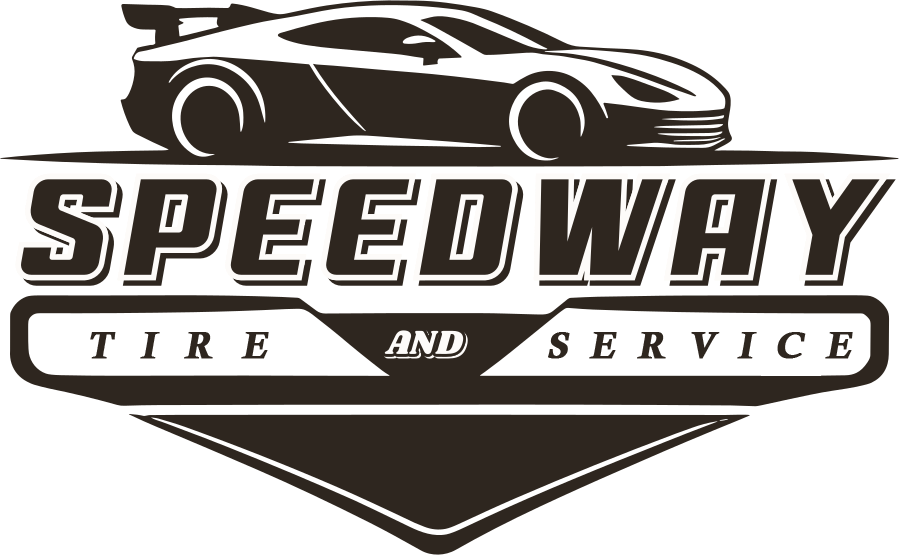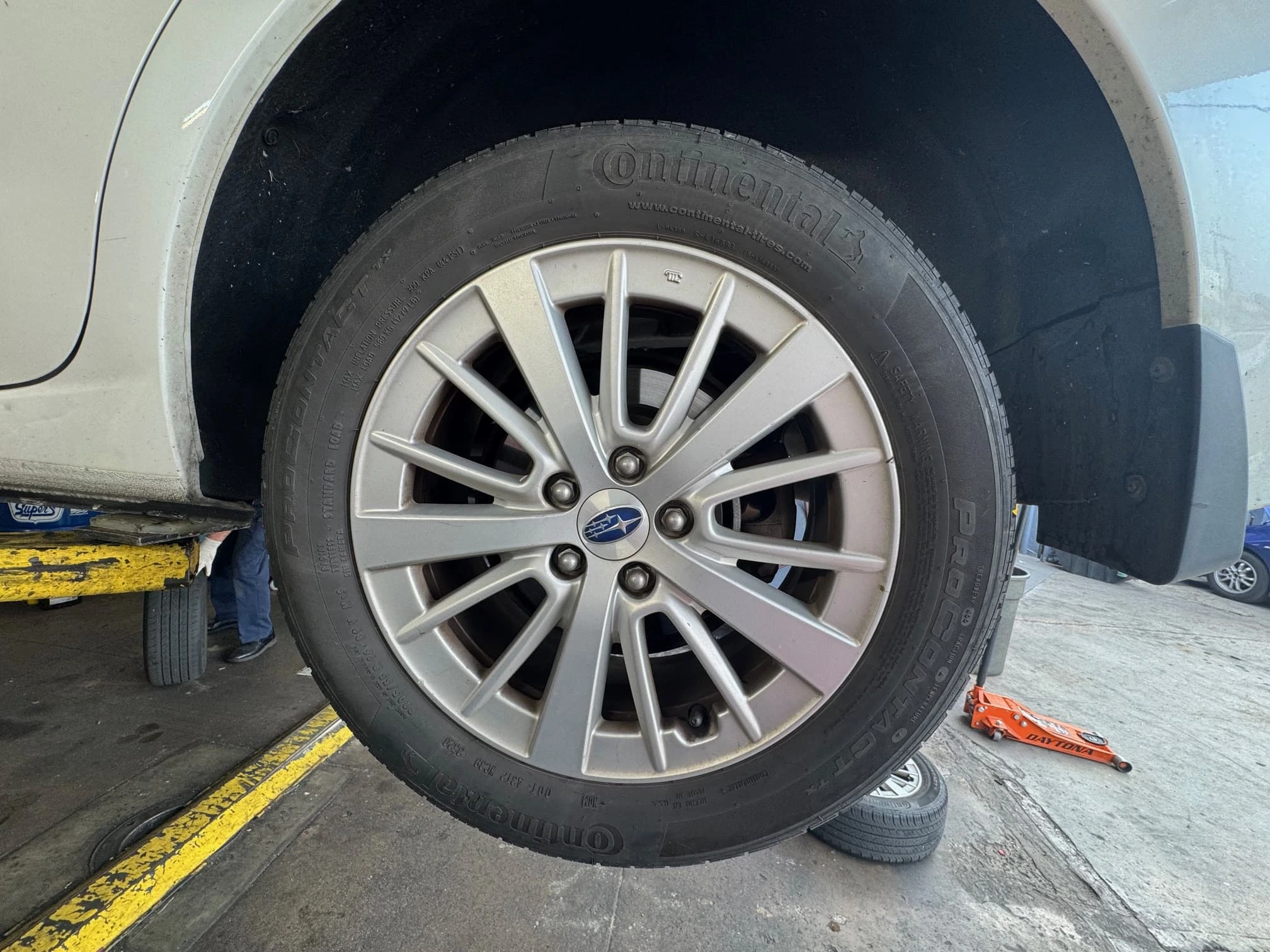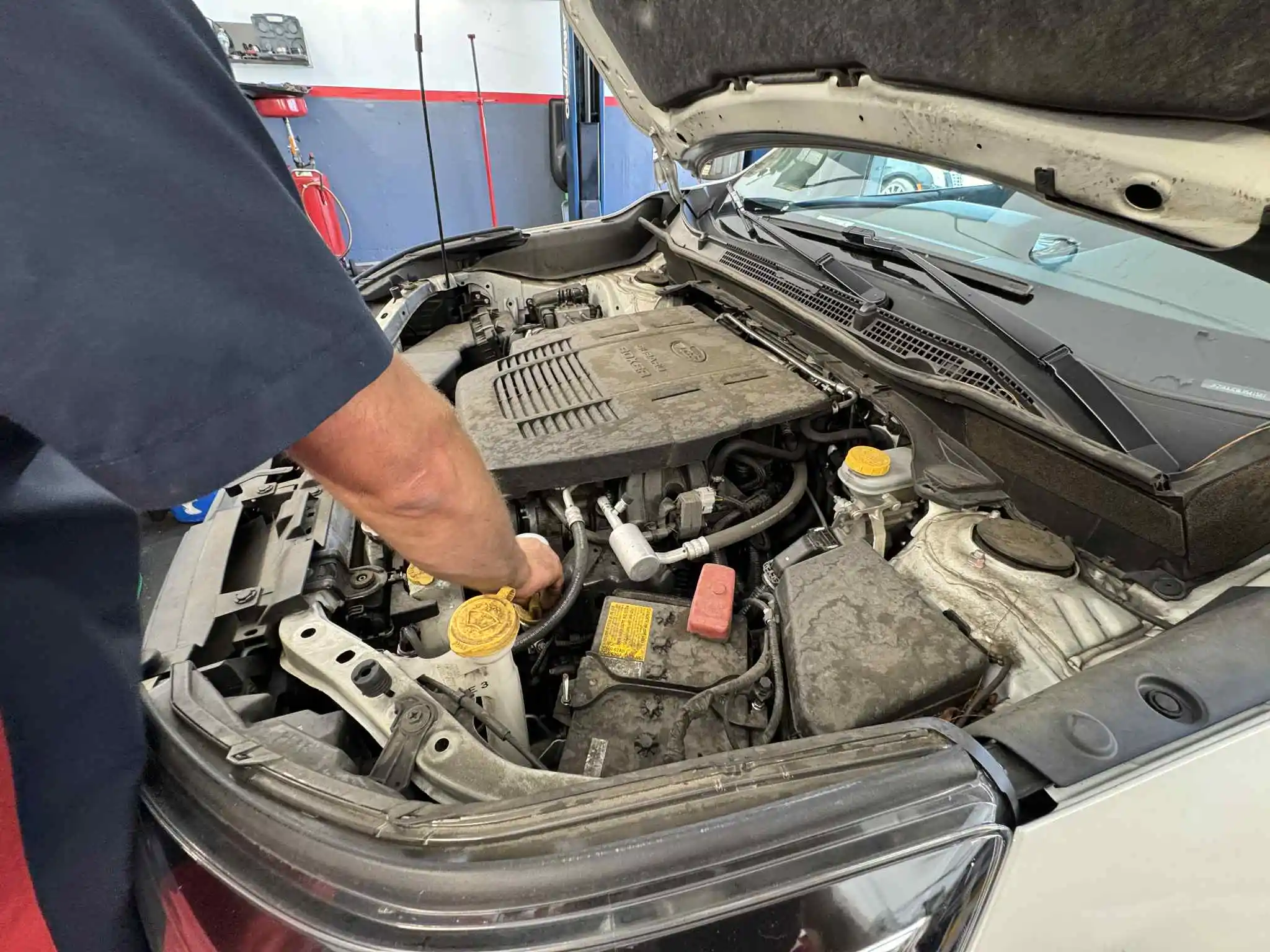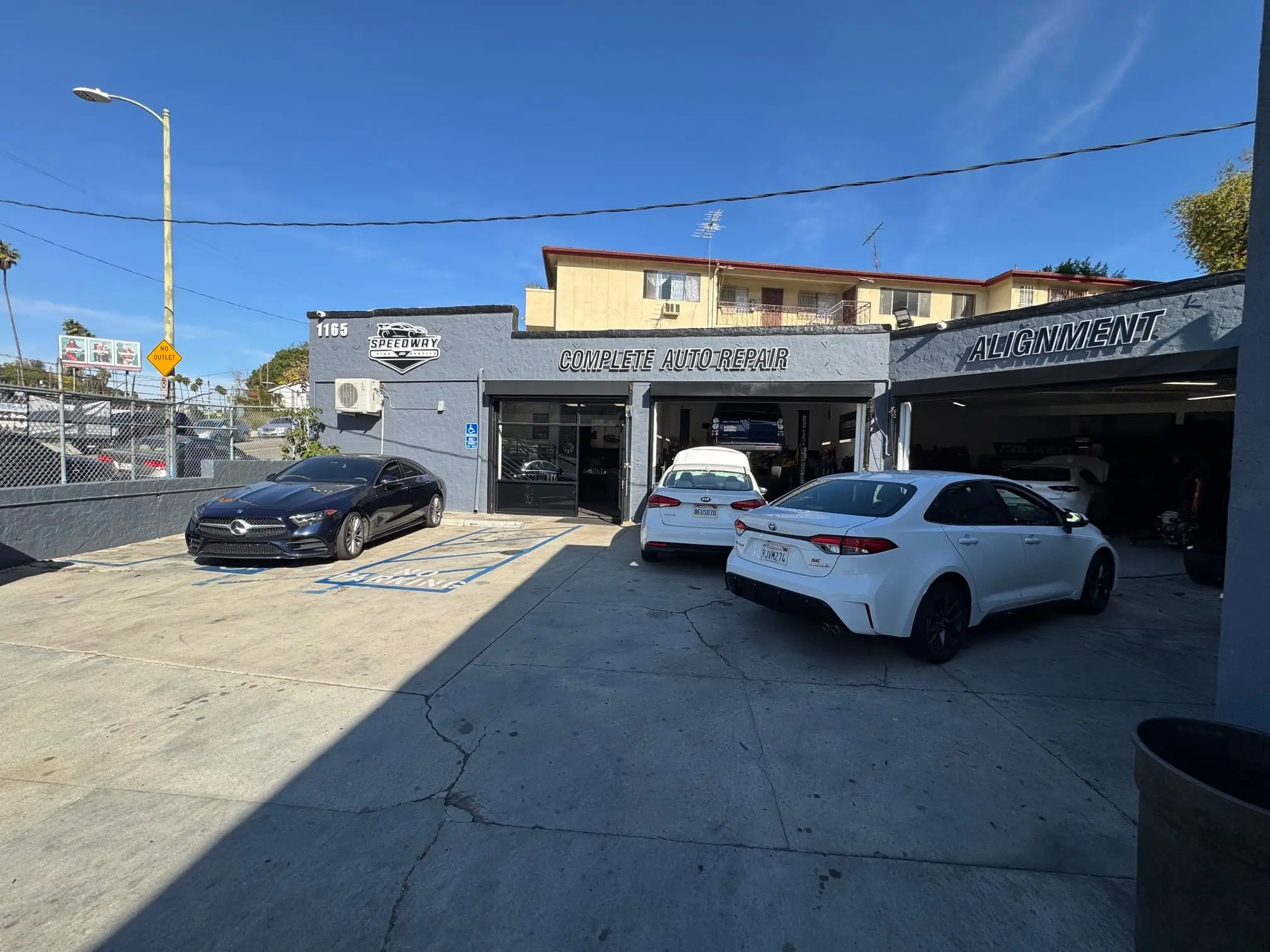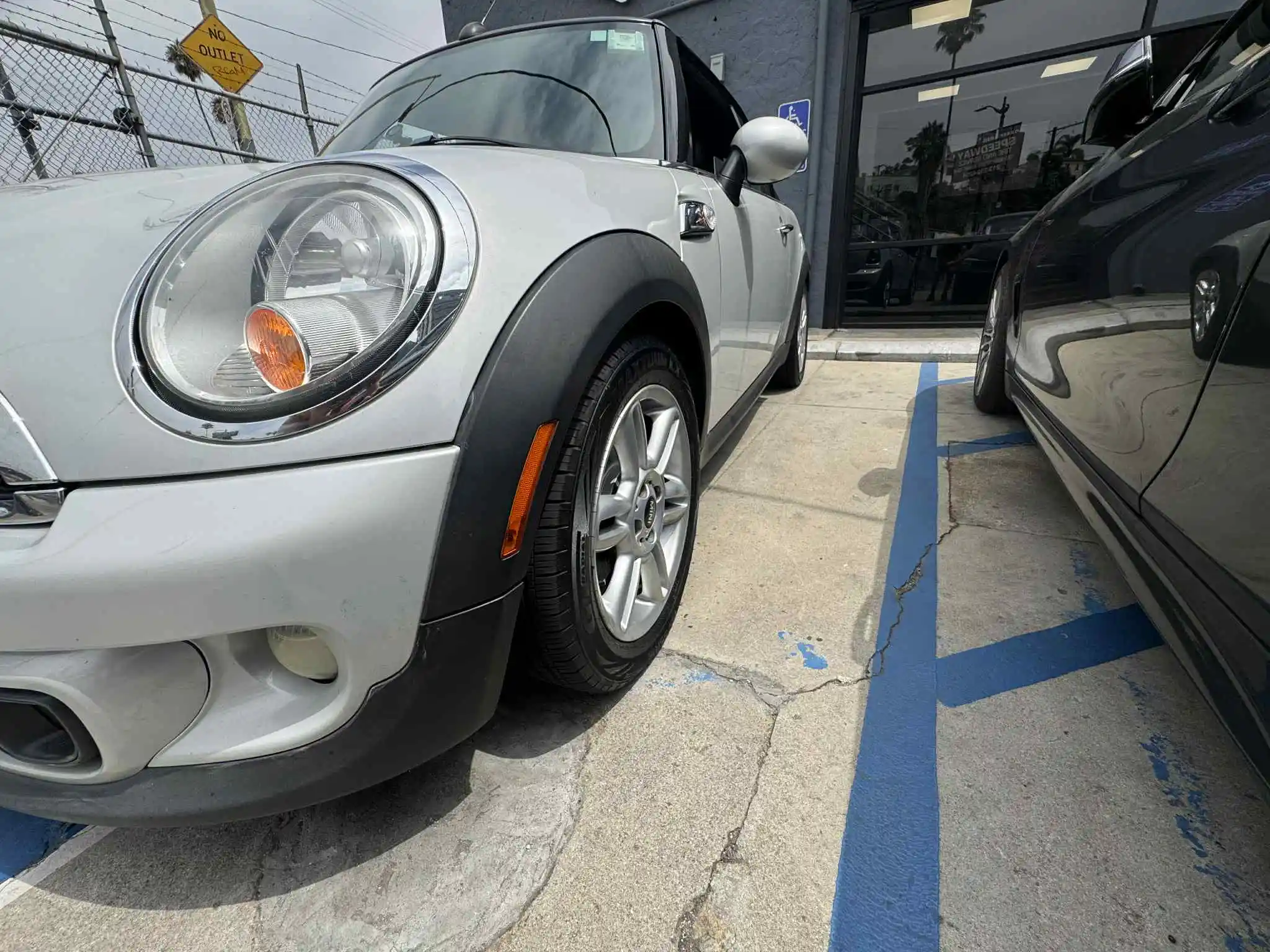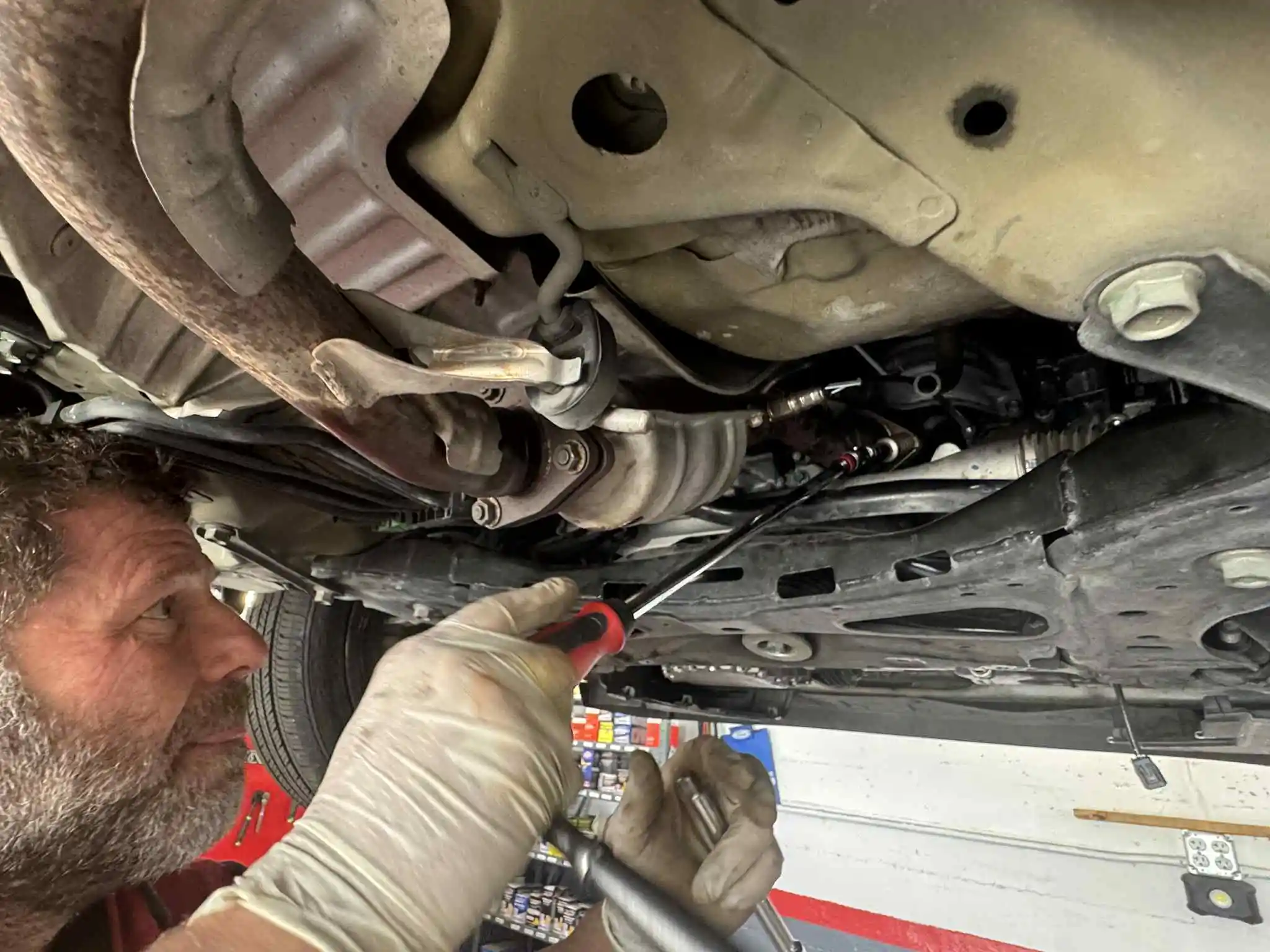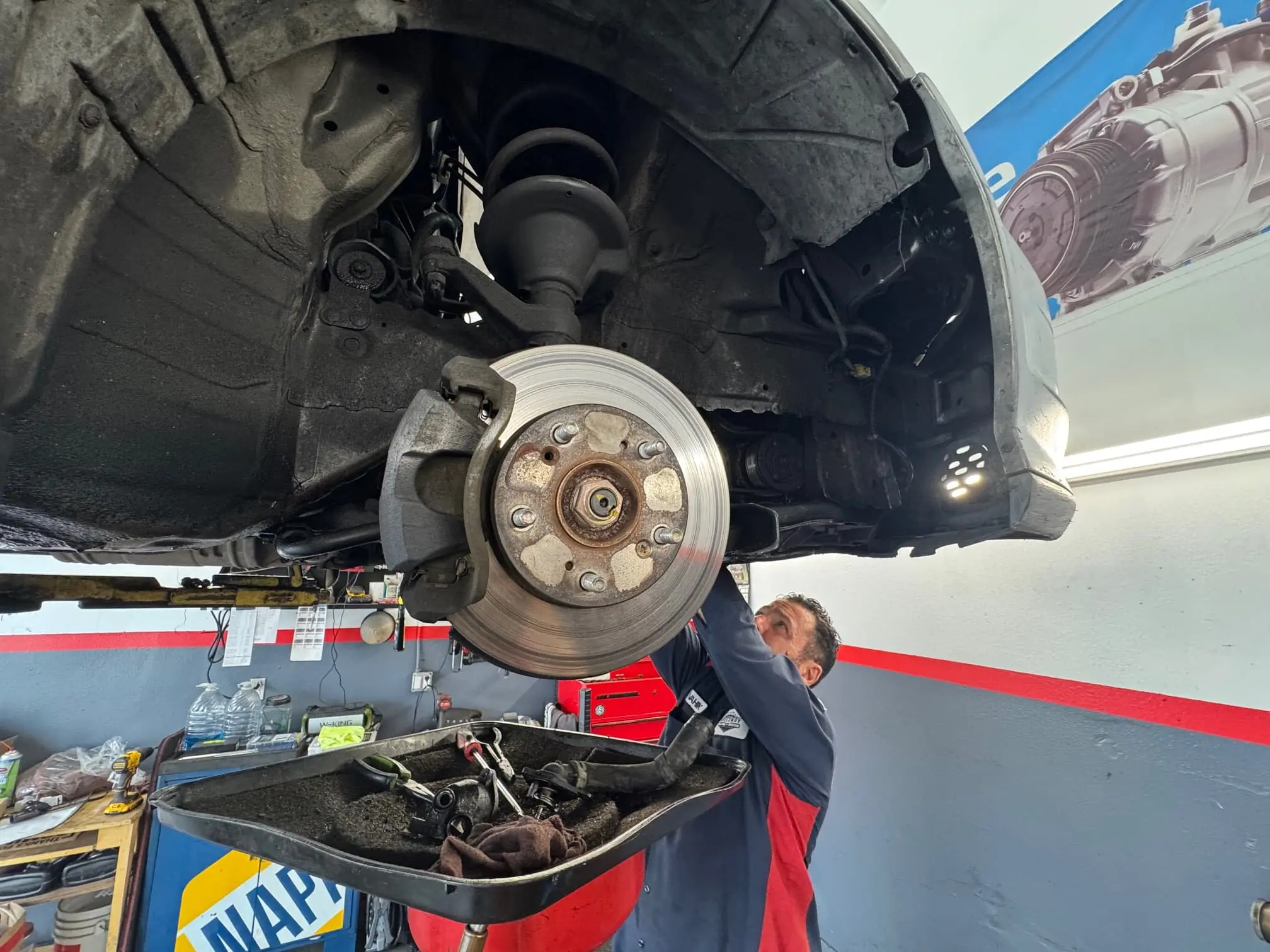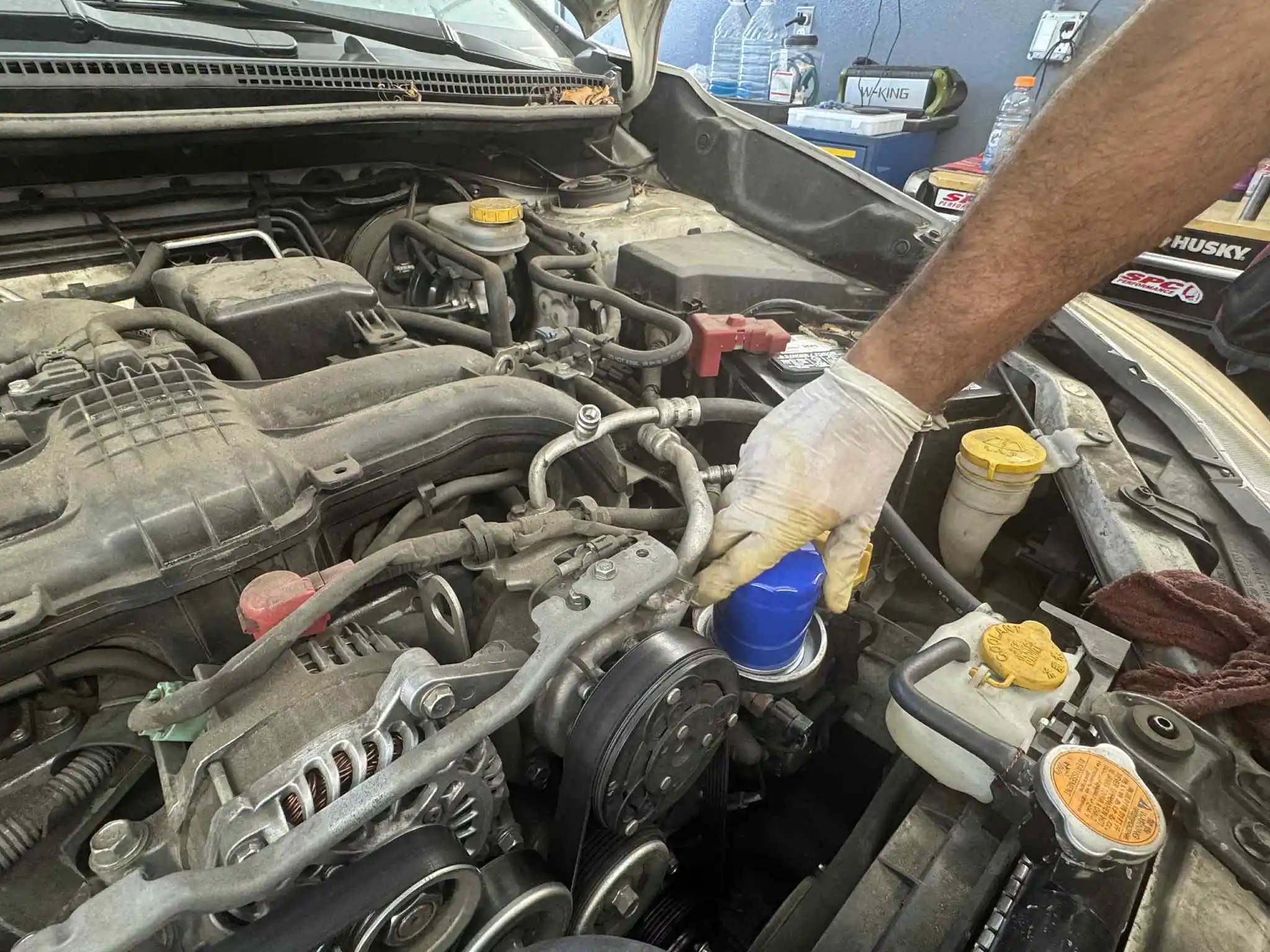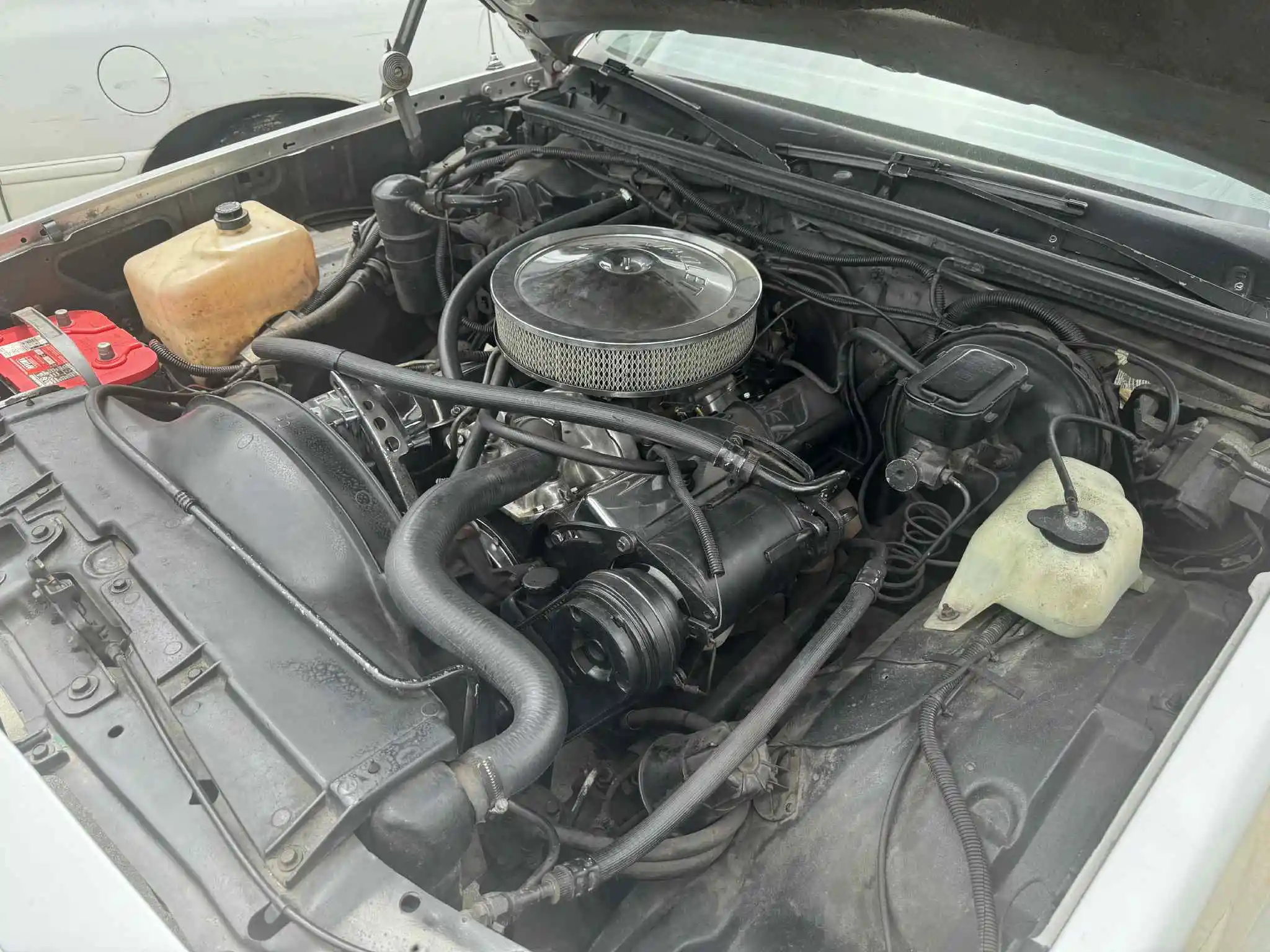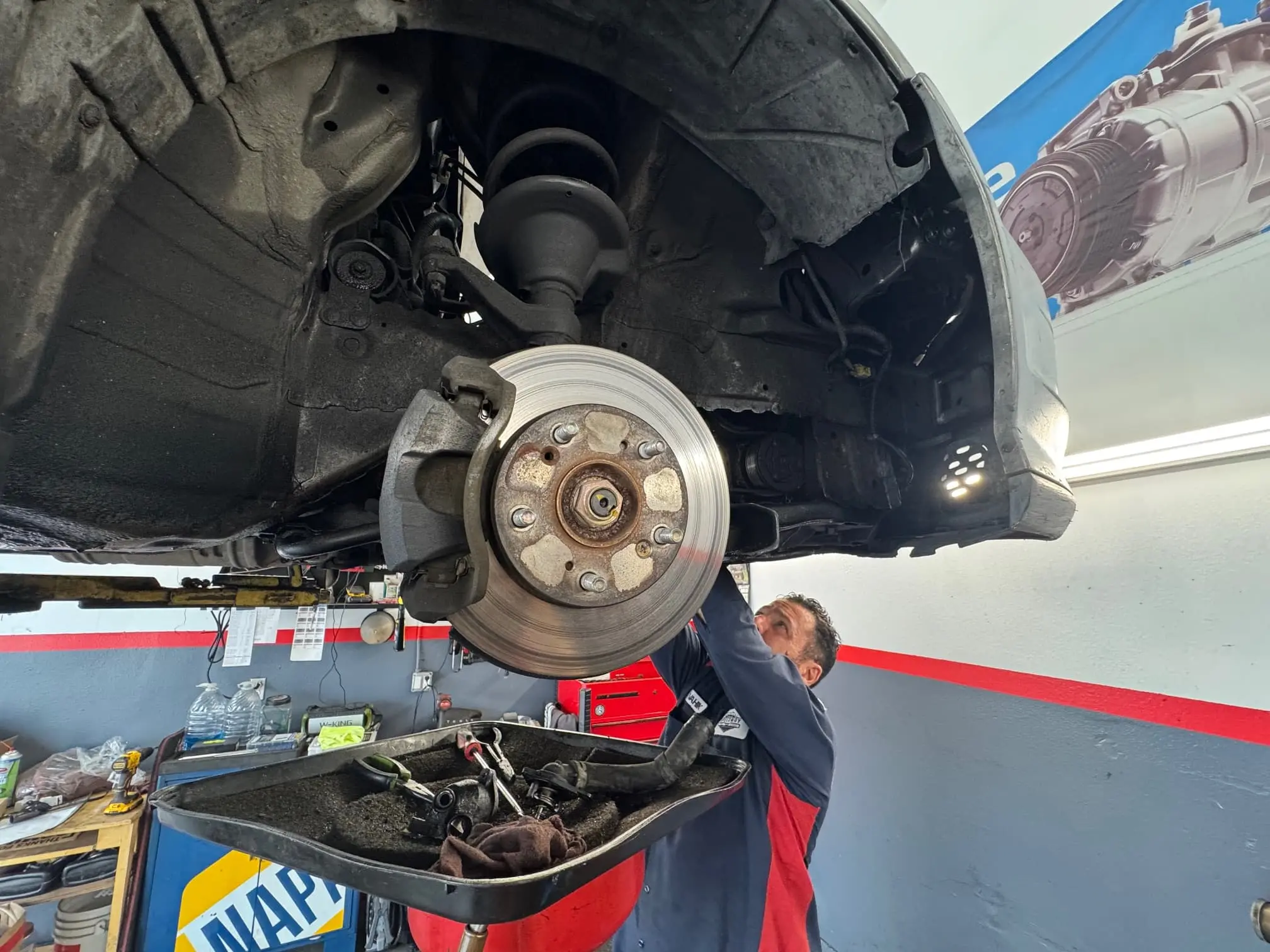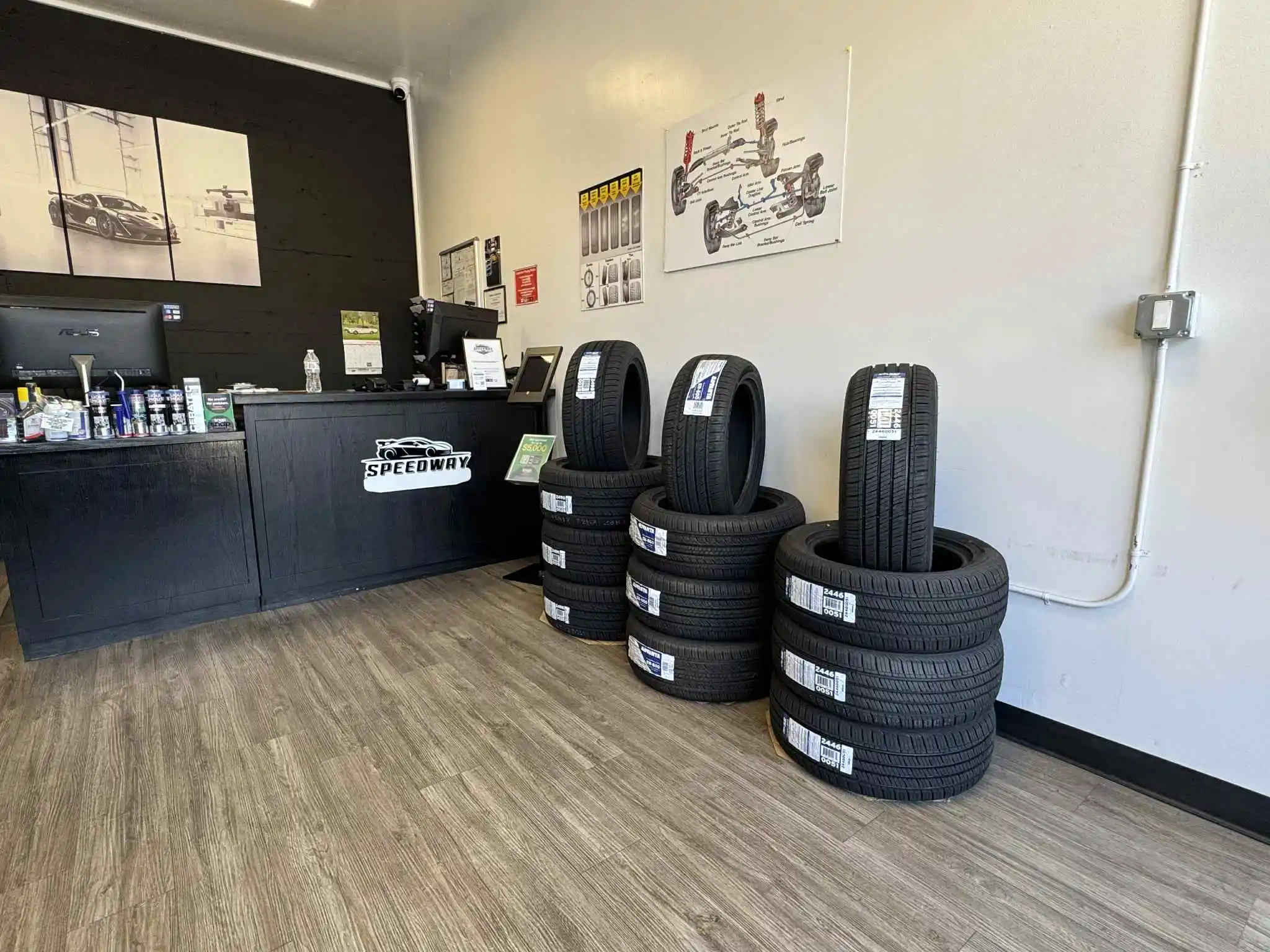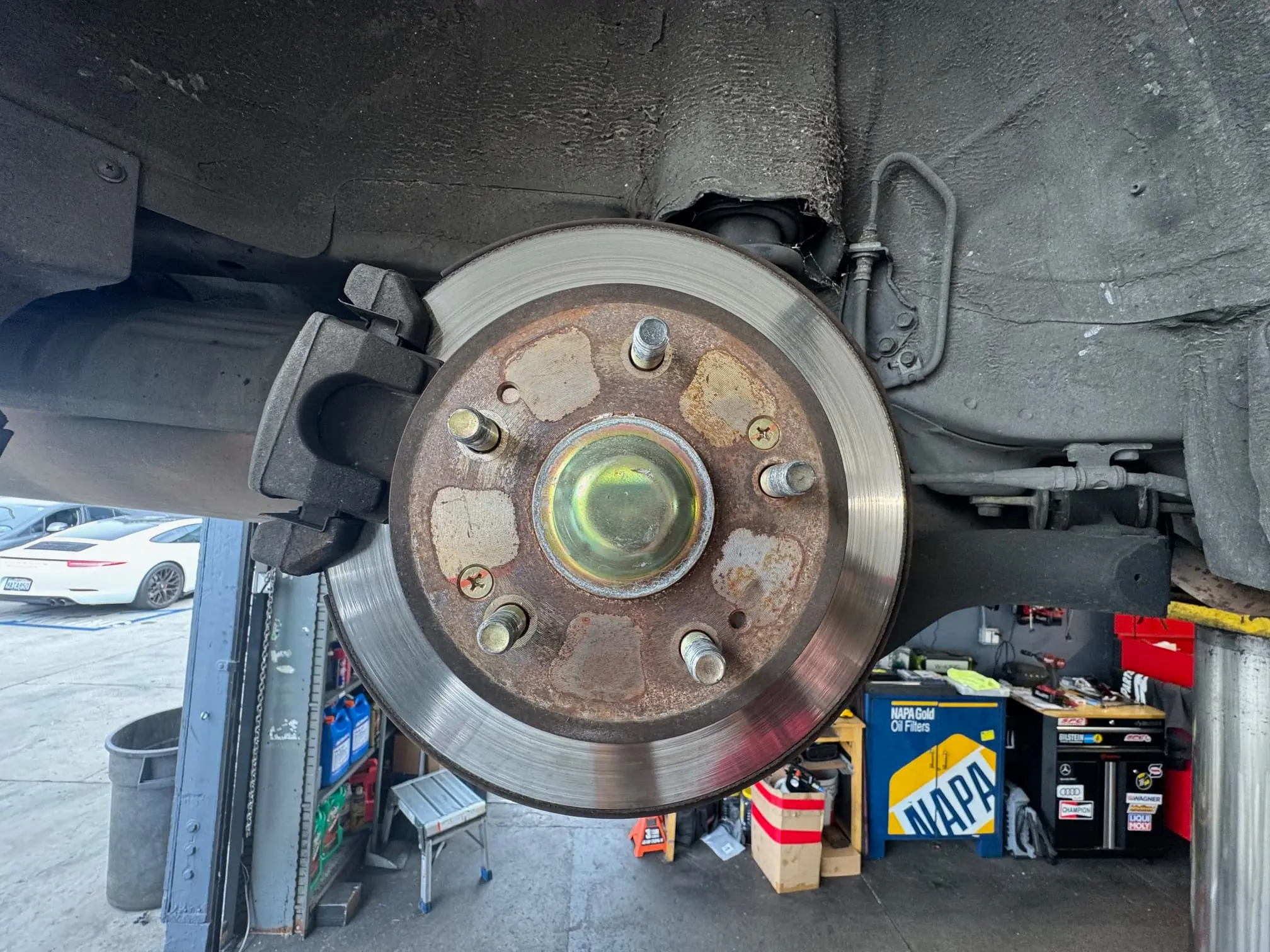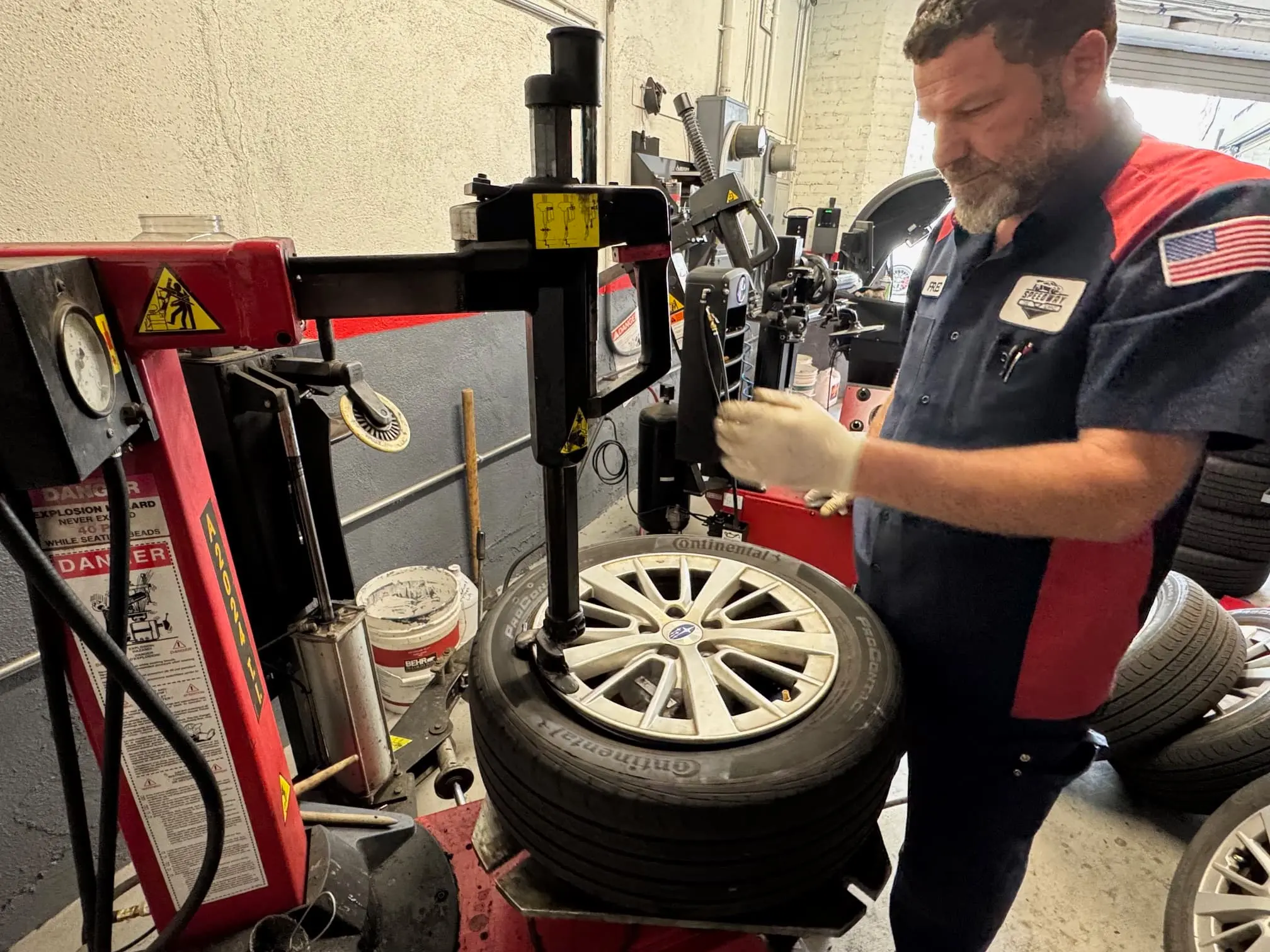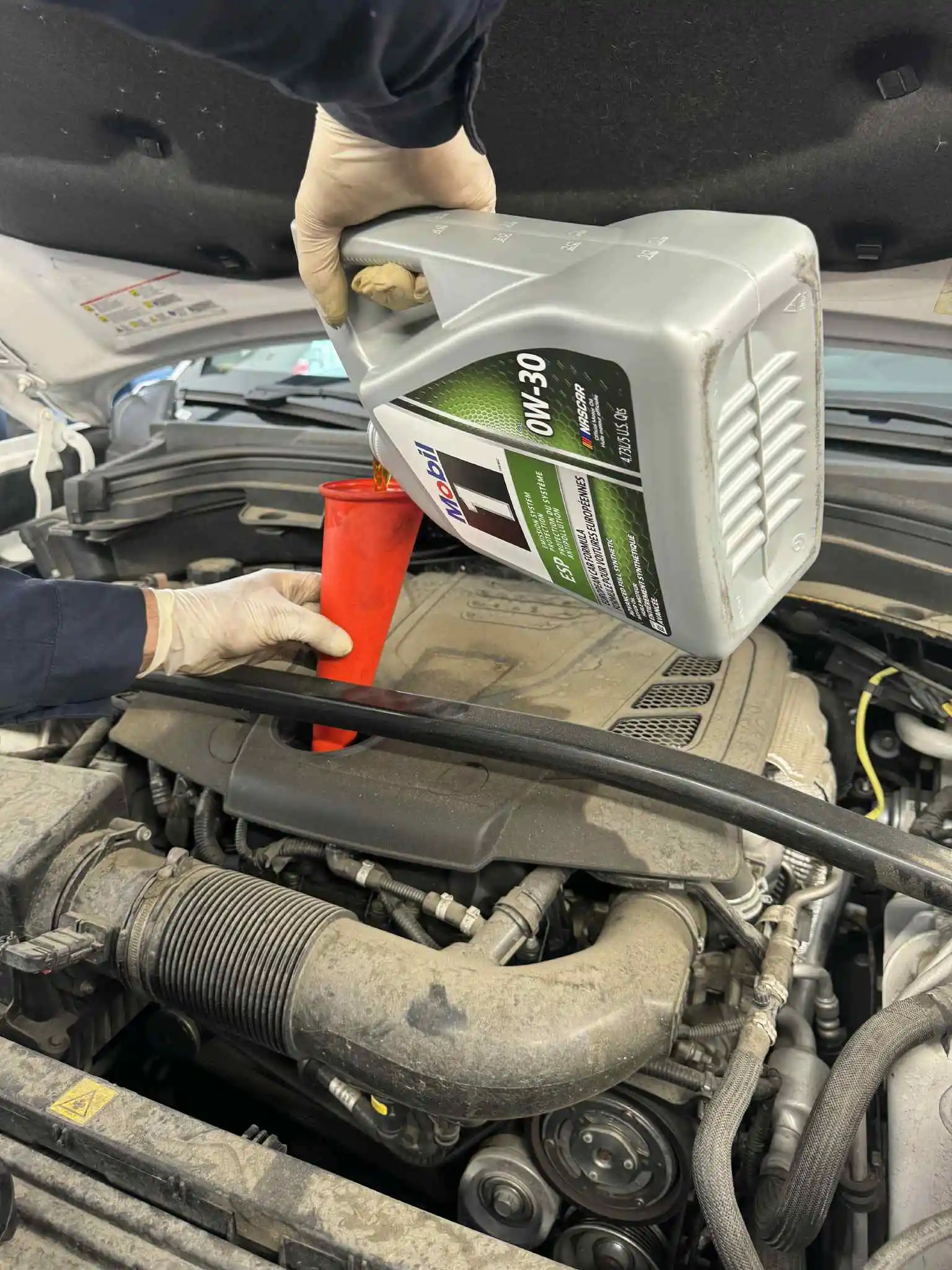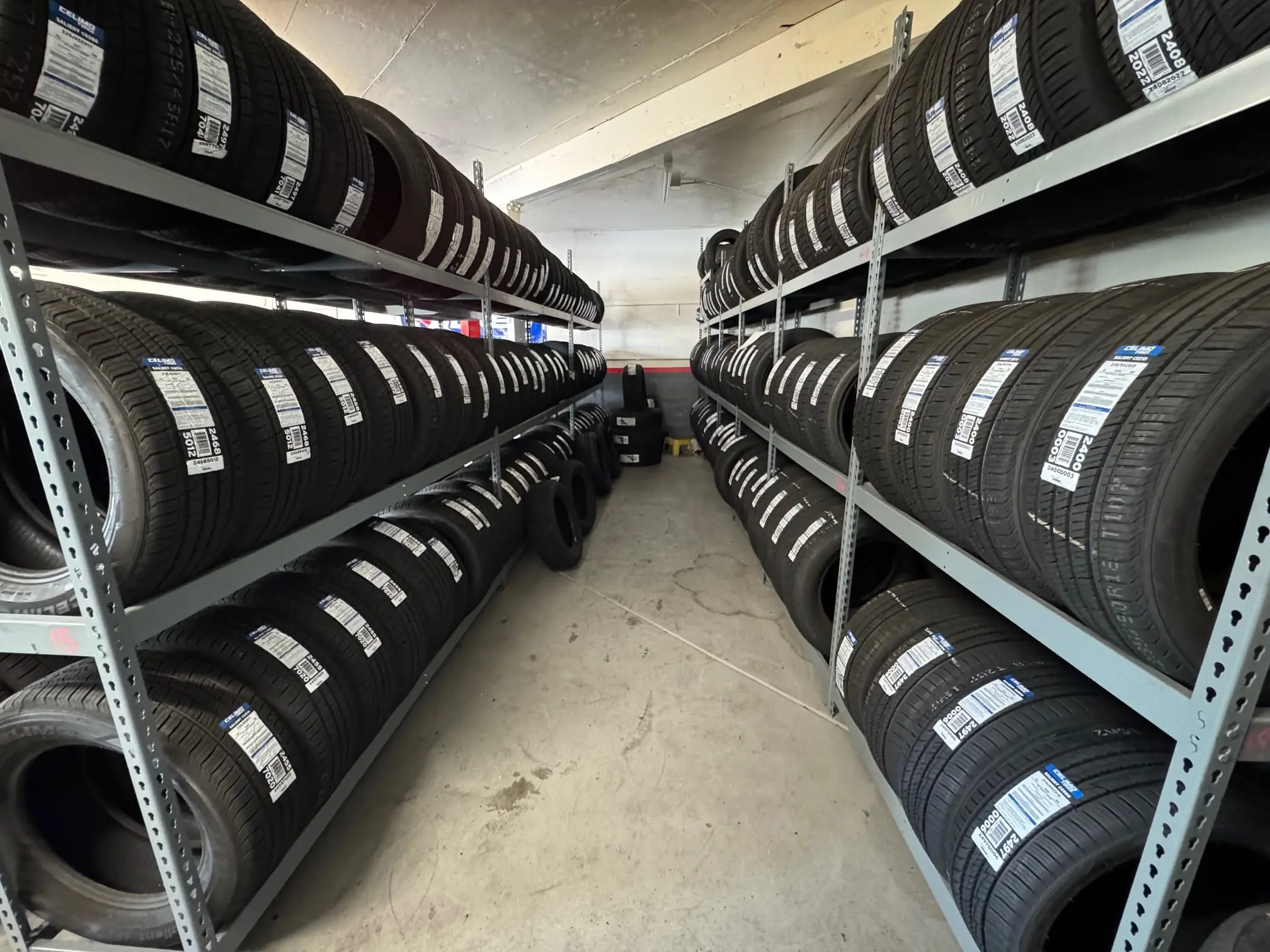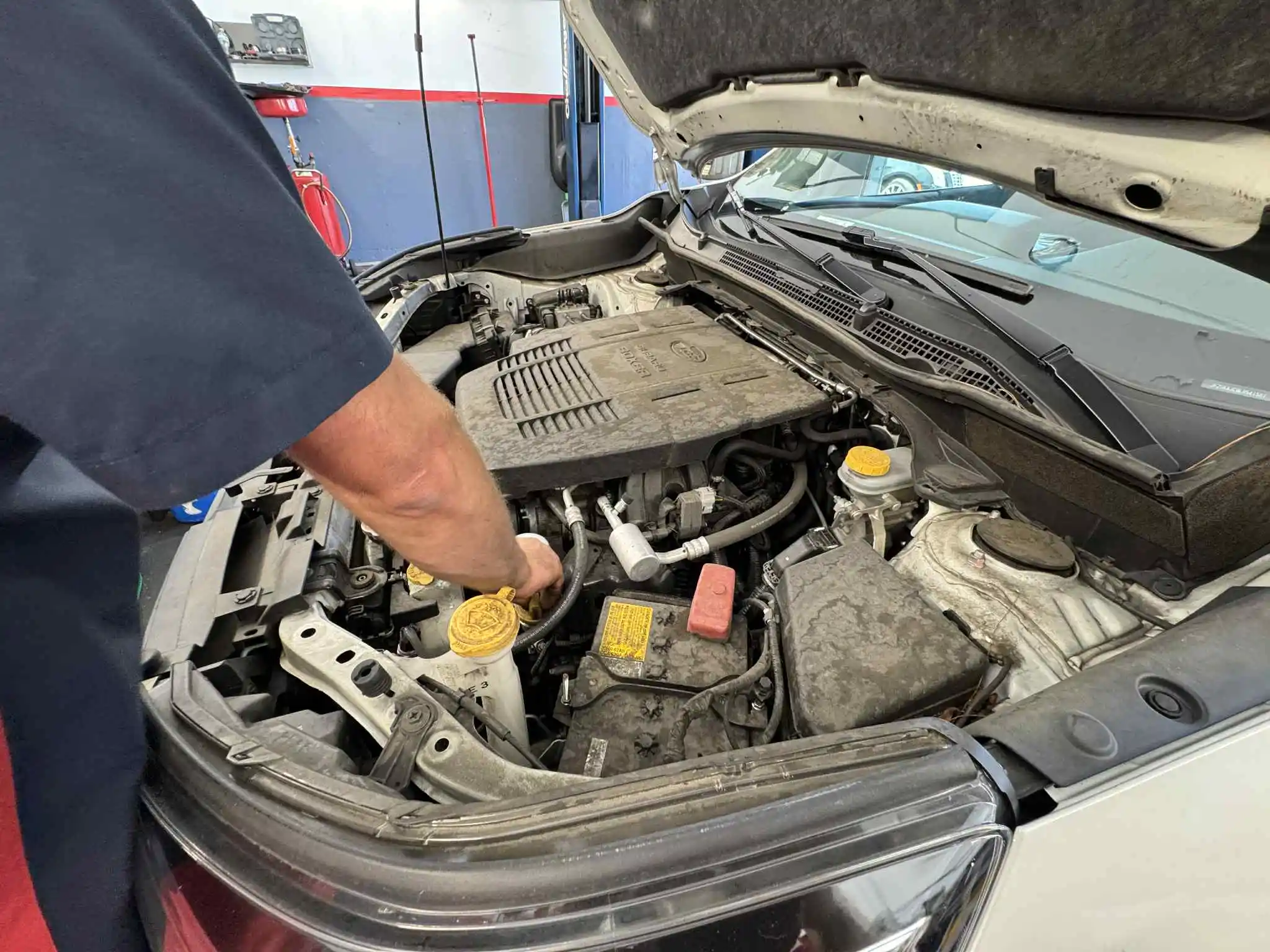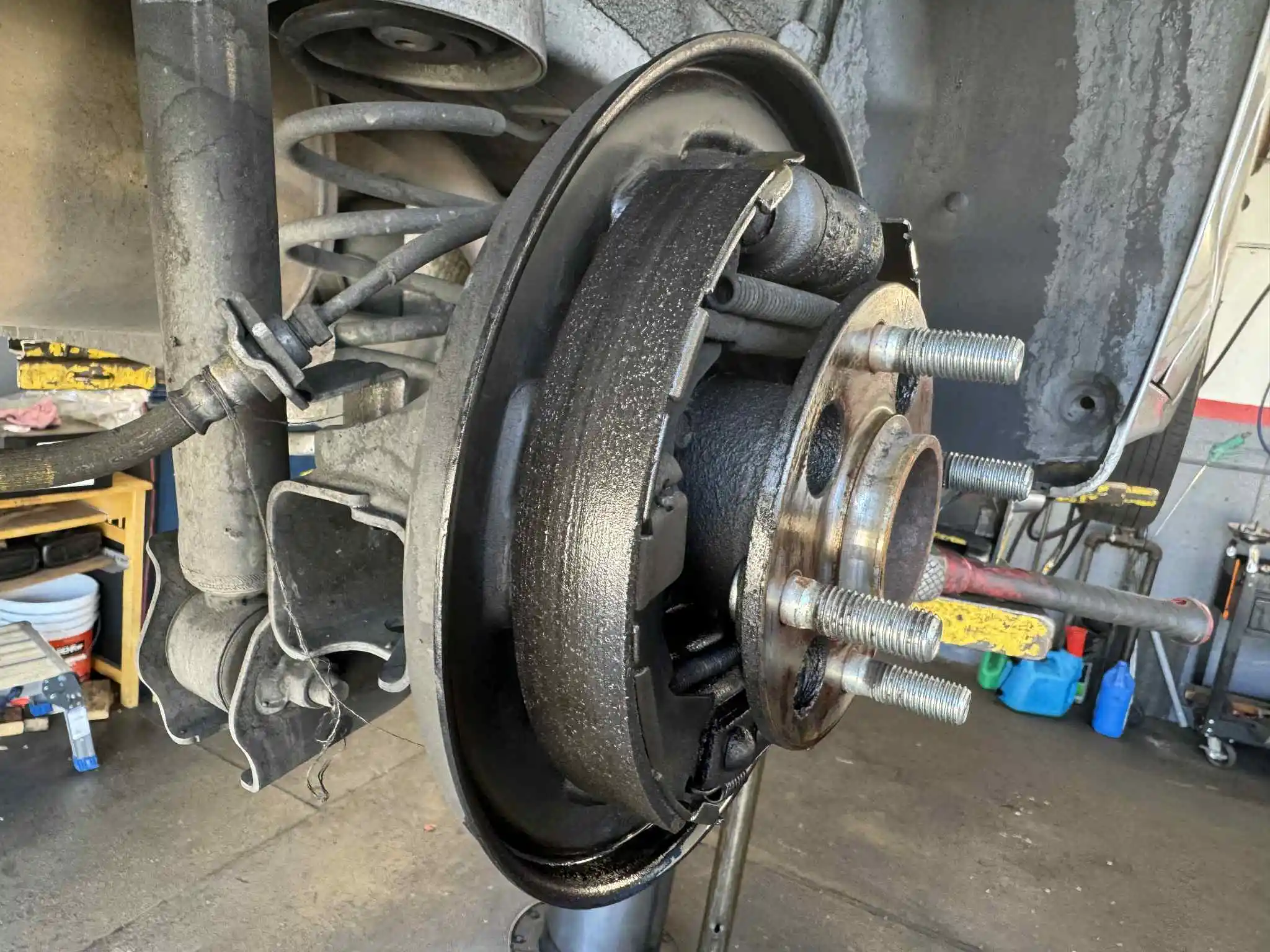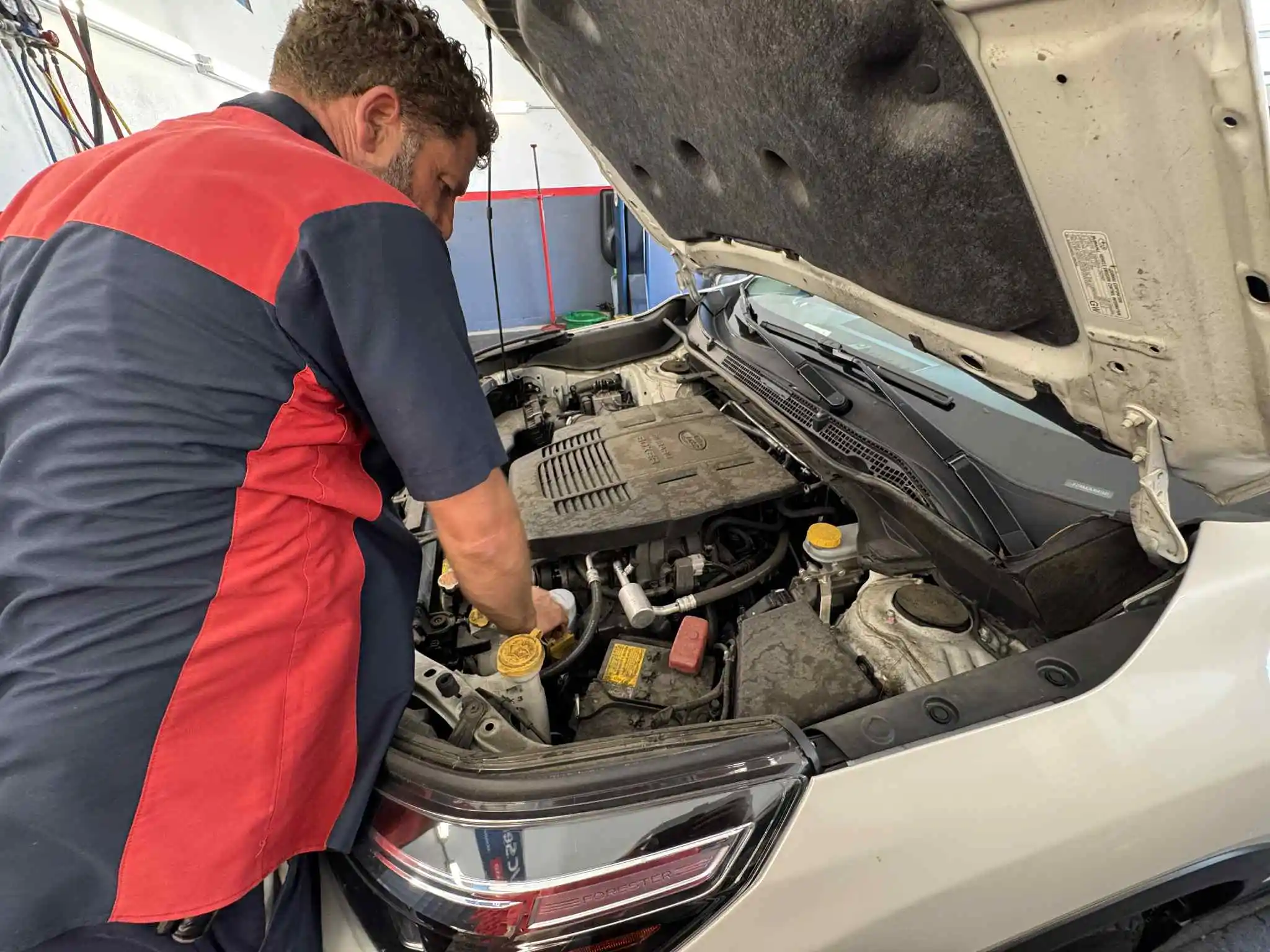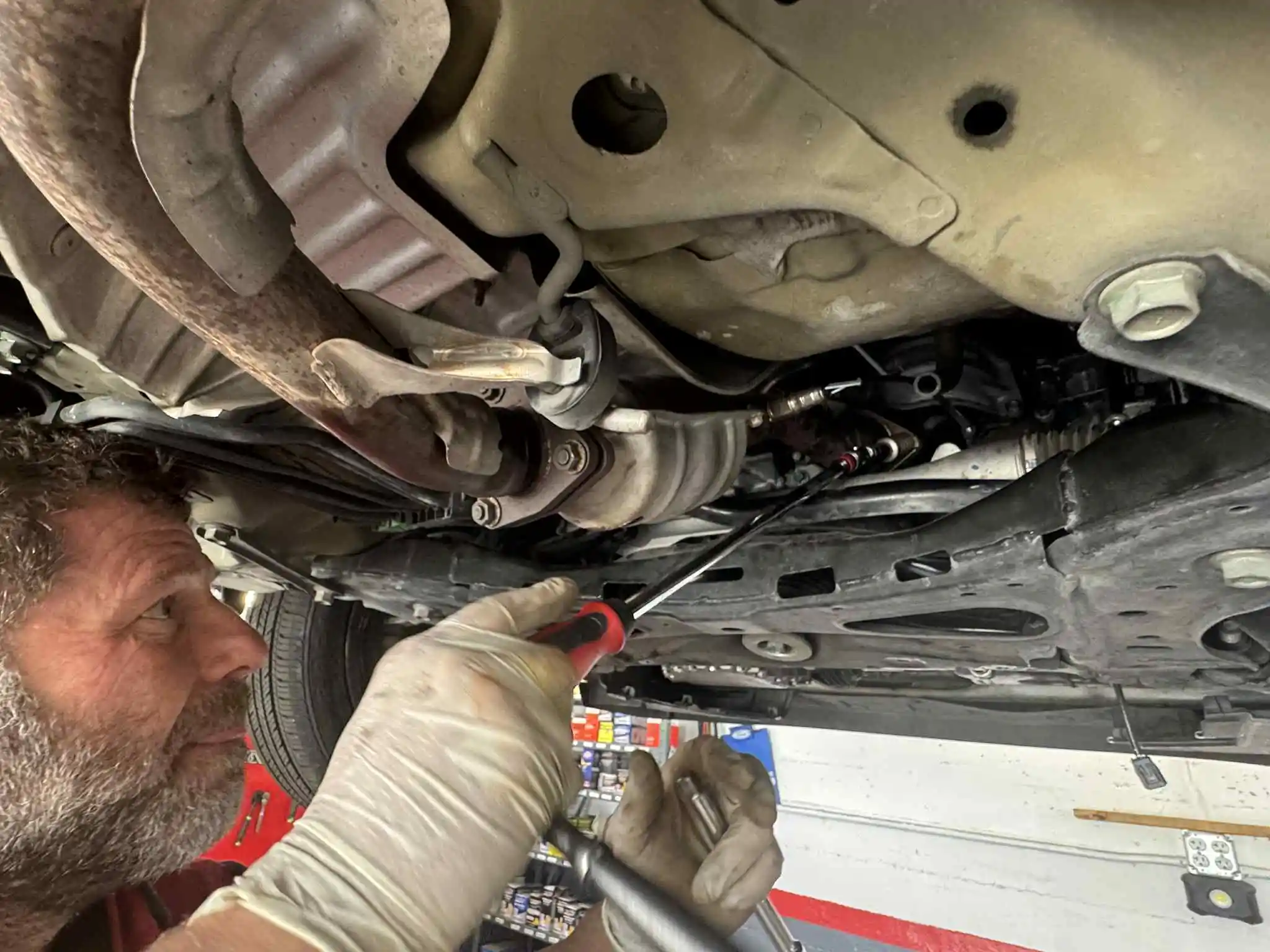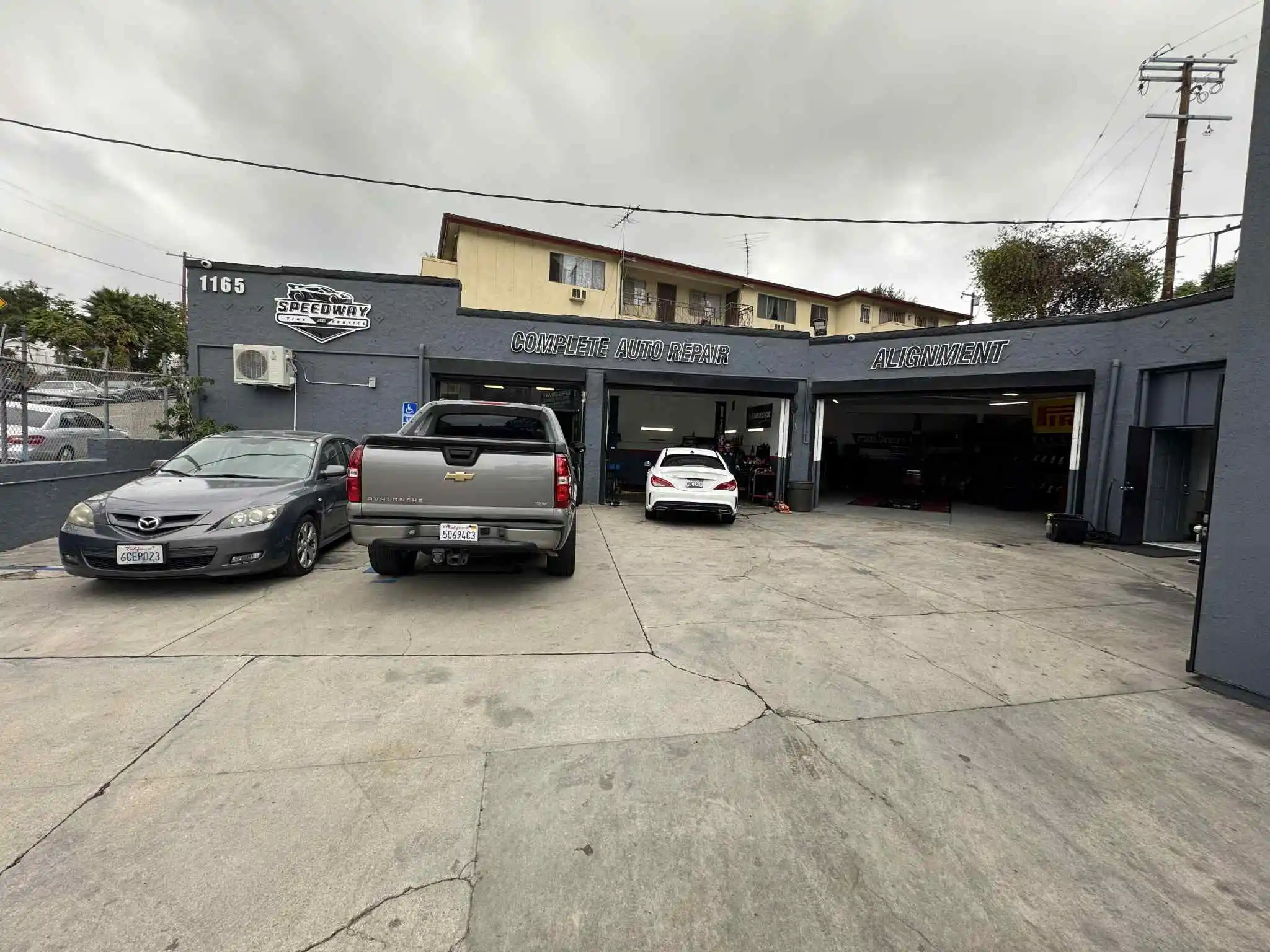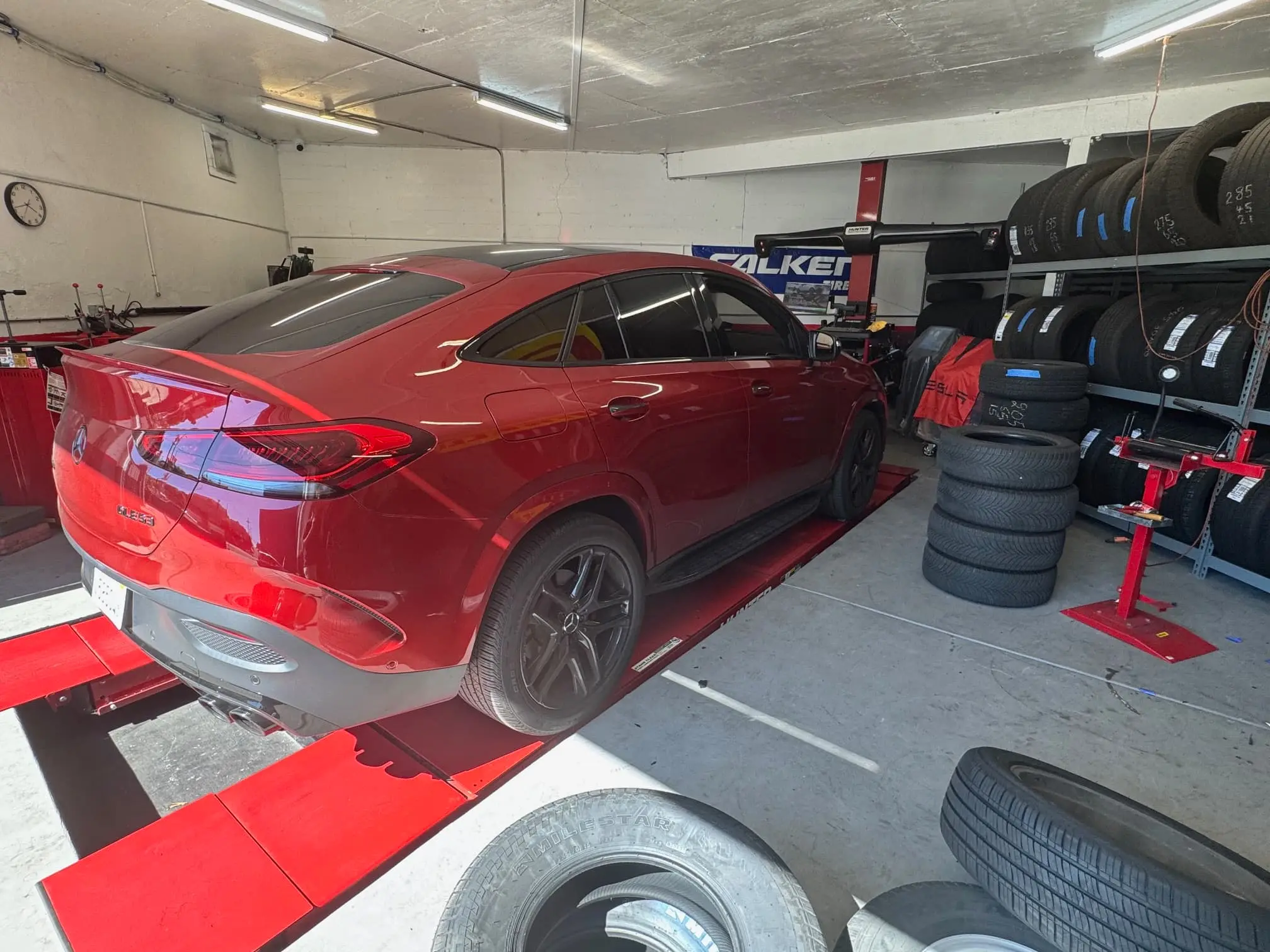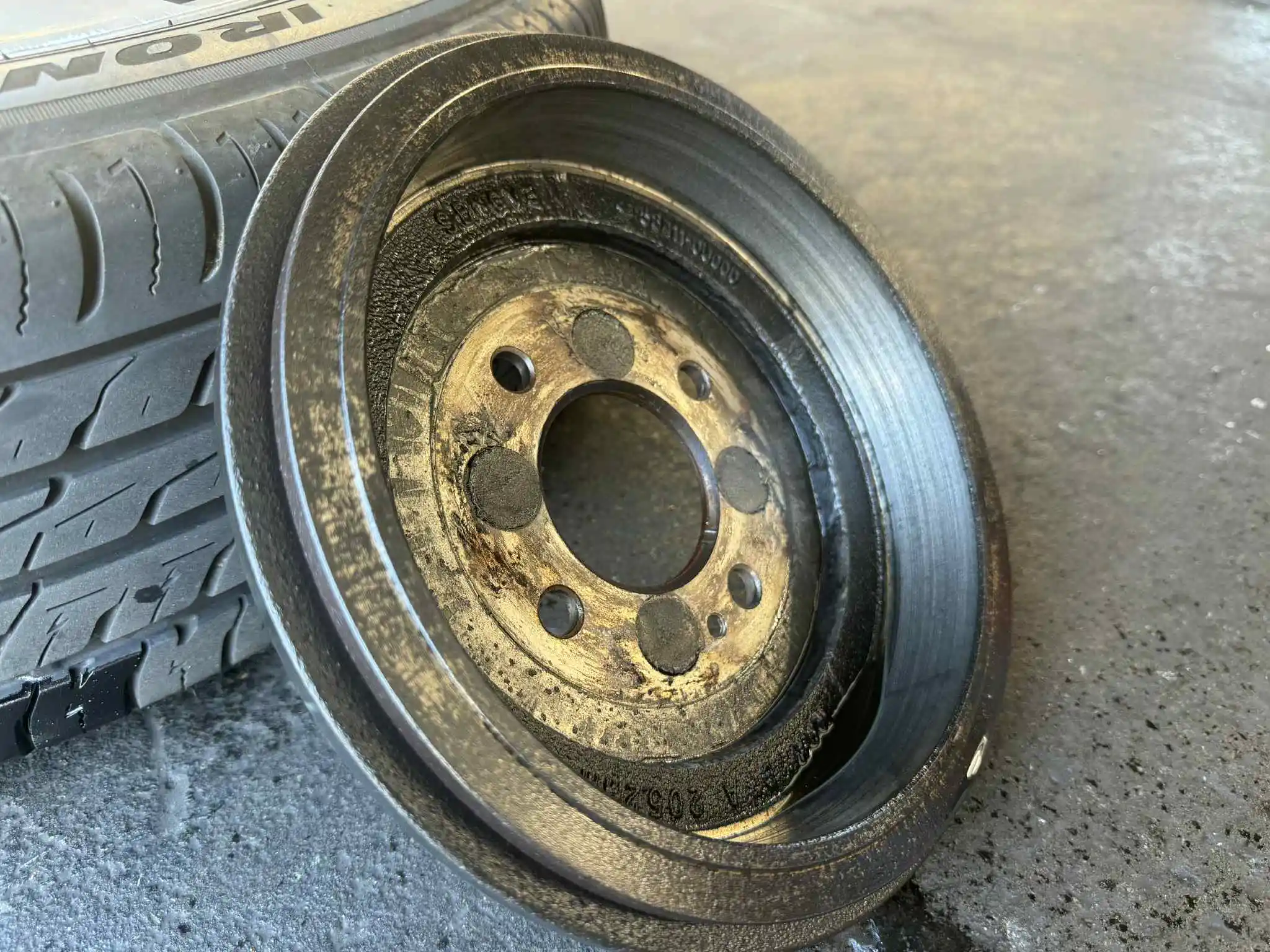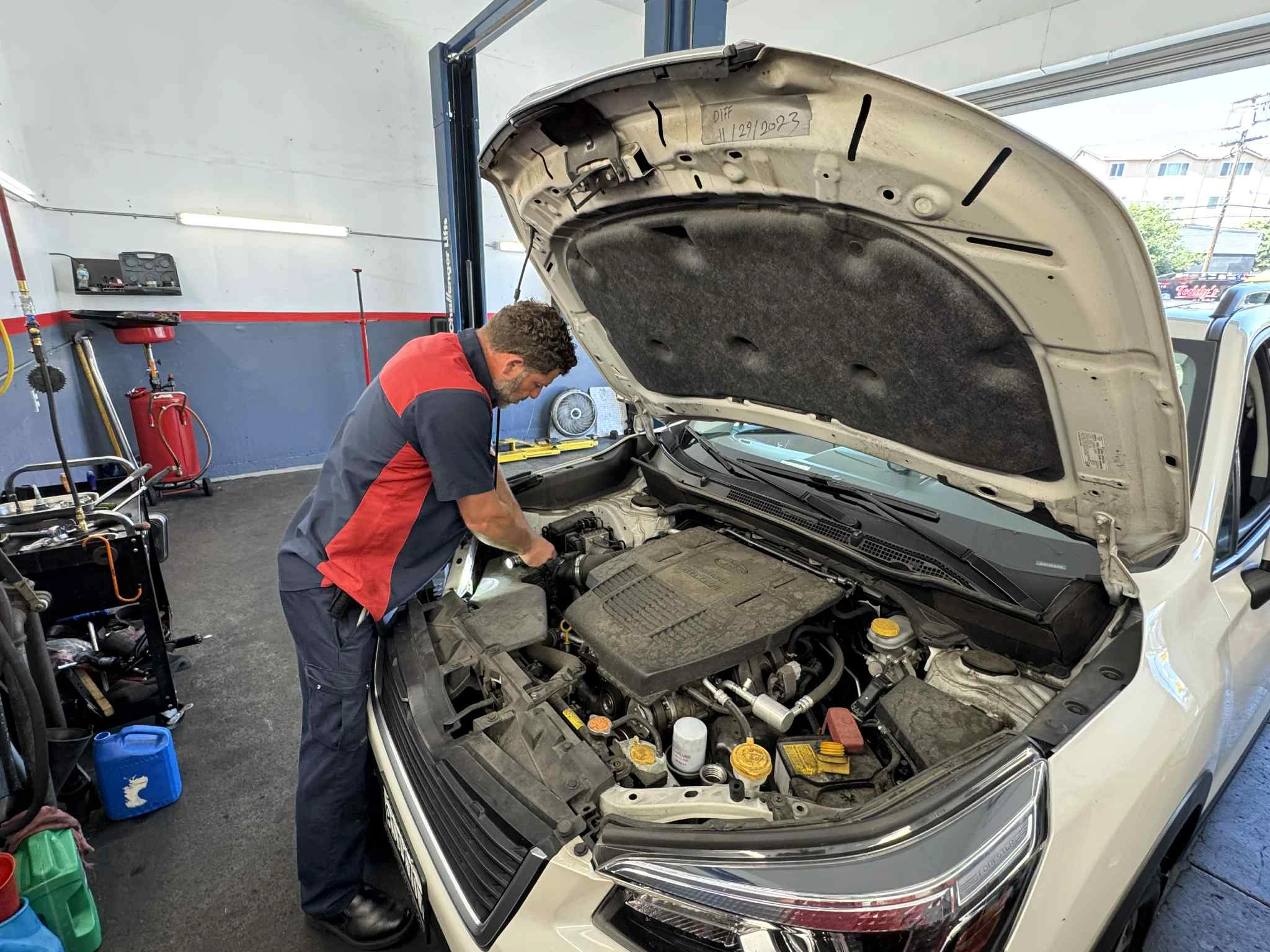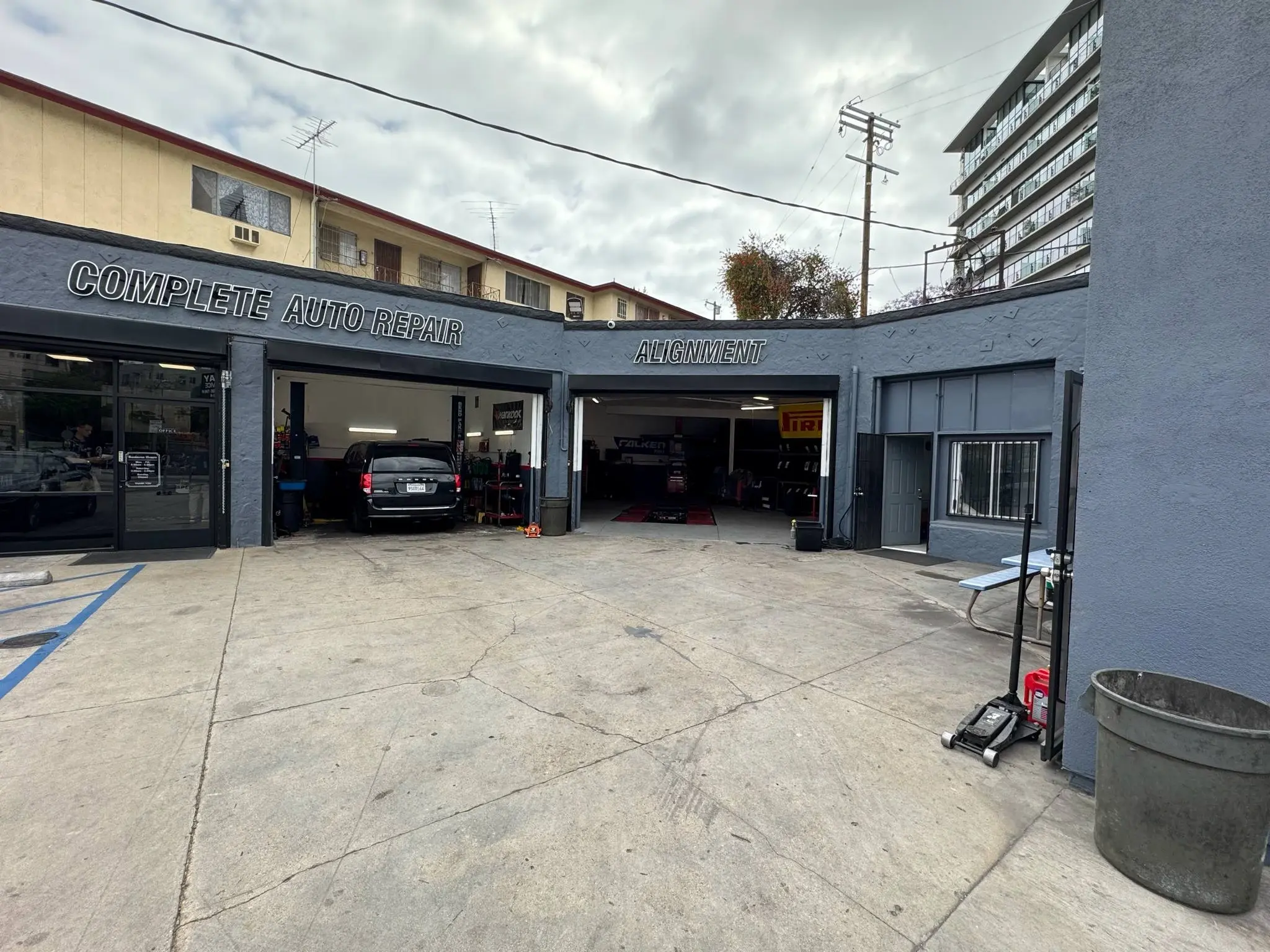How Much Does a Tire Alignment Cost in LA? (And Why It's Worth It)
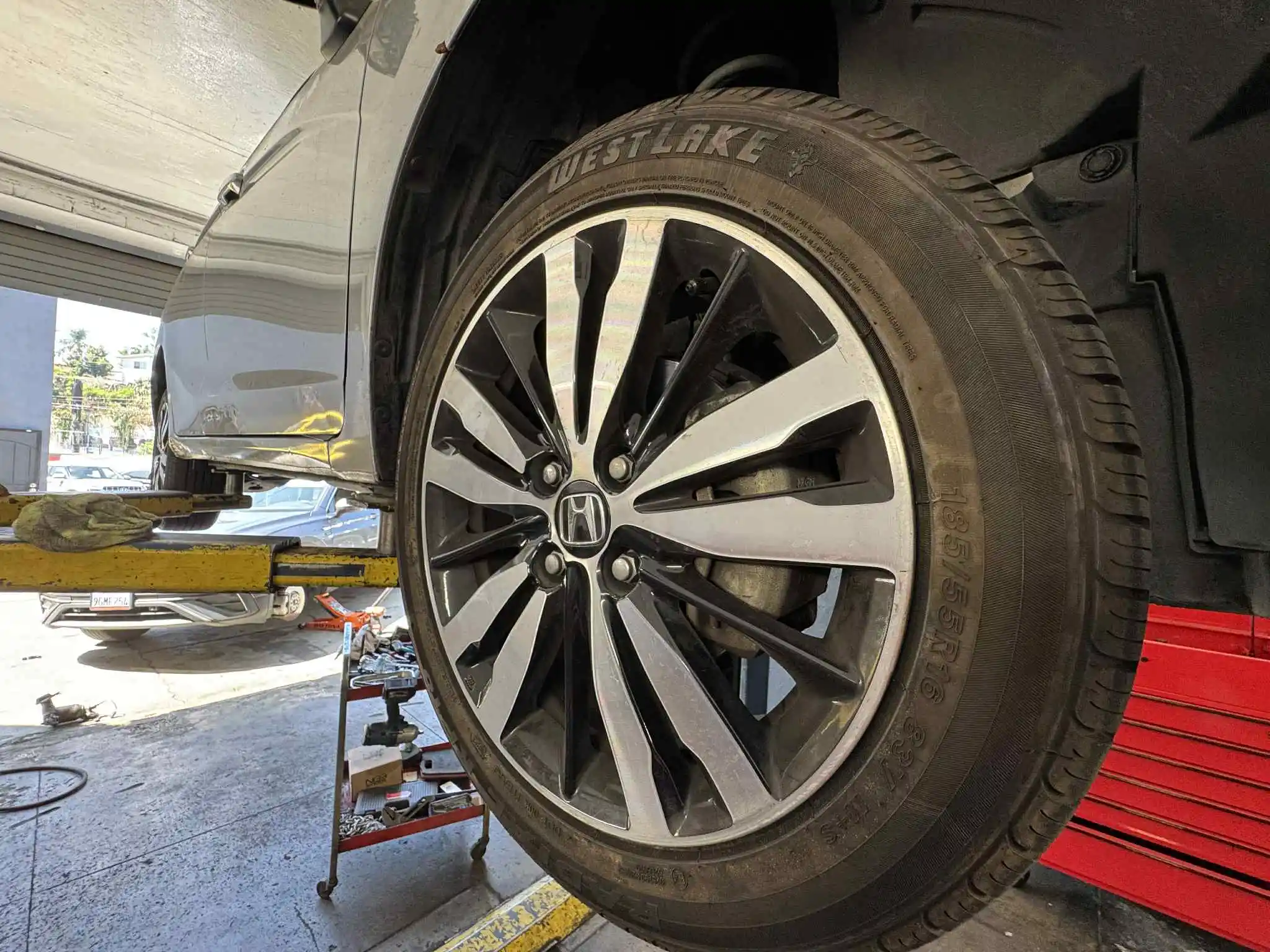
Introduction
Tire alignment cost is one of the most frequently asked questions we hear at Speedway Tire and Service, and for good reason. When your vehicle pulls to one side, your steering wheel sits crooked, or you notice uneven tire wear, you know something's wrong—but is wheel alignment the answer, and what will it cost? Understanding tire alignment cost, wheel alignment benefits, and the consequences of ignoring alignment problems helps you make informed decisions that save money, improve safety, and extend tire life.
Tire alignment cost in Los Angeles typically ranges depending on vehicle type, alignment complexity, and service provider. While this might seem like an unnecessary expense, proper wheel alignment delivers significant wheel alignment benefits including extended tire life (saving on premature tire replacement), improved fuel efficiency (2-3% savings), better handling and safety, and a more comfortable driving experience. When you consider that ignoring alignment problems causes uneven tire wear that can destroy tires in 10,000-15,000 miles instead of the expected 40,000-60,000 miles, tire alignment cost becomes a smart investment rather than an expense.
At Speedway Tire and Service, we've been providing honest, reliable auto repair to Los Angeles drivers for over 25 years. Located at 1165 West Sunset Blvd between Echo Park, Silver Lake, and Downtown LA, we offer professional wheel alignment services using state-of-the-art computerized equipment. Our experienced technicians understand how LA's notorious potholes, curbs, and rough roads accelerate alignment problems, and we provide fast, accurate alignments that restore your vehicle's handling and protect your tire investment.
In this comprehensive guide, we'll explore tire alignment cost including what affects pricing, what's included in alignment services, wheel alignment benefits, signs you need alignment, how alignment problems cause uneven tire wear and pulling to one side, DIY vs. professional alignment, and why Speedway Tire offers the best value for wheel alignment in Los Angeles.
What Is Wheel Alignment?
Understanding what wheel alignment involves helps you appreciate why proper alignment matters and what you're paying for.
Wheel Alignment Defined
Wheel alignment (also called tire alignment or front-end alignment) is the process of adjusting your vehicle's suspension angles to manufacturer specifications. Alignment doesn't actually adjust the wheels or tires themselves—it adjusts the angles at which tires make contact with the road by modifying suspension components.
The Three Primary Alignment Angles:
1. Camber: The inward or outward tilt of the tire when viewed from the front of the vehicle.
•Negative Camber: Top of tire tilts inward (toward vehicle center)
•Positive Camber: Top of tire tilts outward (away from vehicle center)
•Zero Camber: Tire is perfectly vertical
•Proper Camber: Ensures even tire contact with the road surface
2. Toe: The direction tires point relative to the vehicle's centerline when viewed from above.
•Toe-In: Front of tires point toward each other (pigeon-toed)
•Toe-Out: Front of tires point away from each other (duck-footed)
•Zero Toe: Tires point straight ahead
•Proper Toe: Most critical for tire wear—even slight toe misalignment causes rapid, uneven tire wear
3. Caster: The forward or backward tilt of the steering axis when viewed from the side.
•Positive Caster: Steering axis tilts toward driver (most modern vehicles)
•Negative Caster: Steering axis tilts toward front of vehicle (rare)
•Proper Caster: Affects steering feel, stability, and cornering
How Alignment Gets Out of Spec
Impact Damage: Hitting potholes, curbs, or road debris at speed is the most common cause of alignment problems in Los Angeles. Downtown LA's notorious potholes can knock alignment out of spec in a single impact.
Worn Suspension Components: Ball joints, tie rod ends, control arm bushings, and other suspension parts wear over time, allowing alignment angles to shift.
Accidents: Even minor collisions can bend suspension components or shift alignment angles.
Normal Wear: Suspension components gradually wear, causing alignment to drift out of specification over time (typically noticeable after 2-3 years or 30,000-40,000 miles).
Modifications: Lifting, lowering, or installing larger tires without proper alignment adjustments causes alignment problems.
Heavy Loads: Consistently carrying heavy loads or towing can stress suspension components and affect alignment.
Tire Alignment Cost: What to Expect in Los Angeles
Understanding typical tire alignment cost helps you budget appropriately and recognize fair pricing.
Average Tire Alignment Cost in LA
Front-End Alignment (Two-Wheel Alignment):
•Adjusts front wheels only
•Suitable for vehicles with solid rear axles (most trucks, older vehicles)
Four-Wheel Alignment (All-Wheel Alignment):
•Adjusts all four wheels
•Required for most modern cars, SUVs, and vehicles with independent rear suspension
Thrust Angle Alignment:
•Adjusts front wheels and measures rear wheel alignment
•Suitable when rear alignment is fixed but needs verification
Luxury/Performance Vehicle Alignment:
•More complex suspension systems
•Tighter tolerances
•Specialized equipment required
What Affects Tire Alignment Cost?
Vehicle Type: Luxury vehicles, performance cars, and vehicles with complex suspension systems (adaptive suspension, air suspension) require more time and specialized equipment, increasing tire alignment cost.
Alignment Type: Four-wheel alignments cost more than front-end alignments due to additional adjustments and time required.
Suspension Condition: If worn suspension components are discovered during alignment inspection, they must be replaced before alignment can be properly performed, increasing total cost.
Geographic Location: Tire alignment cost varies by location. Los Angeles prices tend to be slightly higher than national averages due to higher labor costs and overhead.
Additional Services: Some shops include tire rotation, inspection, or road test in alignment services; others charge separately.
What's Included in Tire Alignment Cost?
Understanding what's included in tire alignment cost helps you evaluate value and compare quotes.
Pre-Alignment Inspection:
•Visual inspection of tires for uneven tire wear patterns
•Inspection of suspension components (ball joints, tie rods, bushings)
•Test drive to identify pulling to one side, steering wheel position, and handling issues
•Tire pressure check and adjustment
Computerized Alignment Measurement:
•Vehicle is placed on alignment rack with precision sensors attached to each wheel
•Computer measures current alignment angles (camber, toe, caster)
•Comparison to manufacturer specifications
•Identification of which angles are out of specification
Alignment Adjustments:
•Adjustment of camber, toe, and caster to manufacturer specifications
•Fine-tuning to ensure all angles are within tolerance
•Verification that adjustments hold (no loose or worn components)
Post-Alignment Verification:
•Final measurement confirming all angles are within specification
•Steering wheel centering
•Test drive to verify straight tracking and proper handling
•Printout showing before-and-after alignment measurements
At Speedway Tire and Service, our wheel alignment service includes complete pre-alignment inspection, computerized four-wheel alignment, steering wheel centering, post-alignment test drive, and detailed printout showing before-and-after measurements.
Wheel Alignment Benefits: Why It's Worth the Cost
Understanding wheel alignment benefits helps you appreciate why tire alignment cost is an investment, not an expense.
Extended Tire Life
The Problem: Misaligned wheels cause uneven tire wear, destroying tires prematurely. Tires that should last 40,000-60,000 miles may only last 10,000-15,000 miles when alignment is severely out of specification.
The Benefit: Proper alignment ensures even tire contact with the road, maximizing tire life and protecting your tire investment.
The Savings: A set of four tires depending on vehicle type. If proper alignment extends tire life from 15,000 miles to 50,000 miles, you save by avoiding premature tire replacement. This makes tire alignment cost a smart investment with a 3-8x return.
Real Example: A customer came to Speedway Tire with tires showing severe uneven tire wear after only 12,000 miles. Alignment measurement revealed toe was 0.5 degrees out of specification—enough to destroy tires in 15,000 miles. After alignment correction, the replacement tires lasted 55,000 miles, saving the customer over $800 in premature tire replacement costs.
Improved Fuel Efficiency
The Problem: Misaligned wheels create rolling resistance—tires fight each other rather than rolling freely. This resistance forces your engine to work harder, consuming more fuel.
The Benefit: Proper alignment reduces rolling resistance, improving fuel efficiency by 2-3% on average.
The Savings: If you drive 12,000 miles per year, get 25 mpg, and pay $4.50 per gallon (typical LA prices), you spend $2,160 annually on fuel. A 2-3% improvement saves $43-$65 per year—nearly half the tire alignment cost recovered in fuel savings alone.
Better Handling and Safety
The Problem: Misaligned wheels cause pulling to one side, requiring constant steering correction. This is tiring on long drives and dangerous in emergency situations when you need precise vehicle control.
The Benefit: Proper alignment ensures your vehicle tracks straight, responds predictably to steering inputs, and handles safely in all conditions.
The Safety Factor: In emergency situations—sudden braking, evasive maneuvers, or adverse weather—proper alignment can be the difference between avoiding an accident and losing control. This safety benefit alone justifies tire alignment cost.
More Comfortable Driving Experience
The Problem: Misaligned wheels cause vibration, crooked steering wheel, and constant need for steering correction—all contributing to driver fatigue and discomfort.
The Benefit: Proper alignment creates a smooth, comfortable driving experience with straight tracking, centered steering wheel, and minimal vibration.
The Value: If you commute in Los Angeles traffic daily, the comfort and reduced stress from proper alignment significantly improves your quality of life.
Protection of Suspension Components
The Problem: Misaligned wheels stress suspension components unevenly, accelerating wear on ball joints, tie rod ends, and bushings.
The Benefit: Proper alignment reduces stress on suspension components, extending their life and preventing expensive repairs.
The Savings: Suspension repairs (ball joints, tie rods, control arms) depending on vehicle and components. Proper alignment helps maximize suspension component life, avoiding or delaying these expensive repairs.
Signs You Need Wheel Alignment
Recognizing signs of alignment problems helps you address issues before they cause expensive uneven tire wear or safety concerns.
Pulling to One Side
The Symptom: Your vehicle drifts or pulls to the left or right when driving on a straight, level road. You must constantly apply steering pressure to keep the vehicle going straight.
The Cause: Pulling to one side typically indicates camber or caster misalignment. One side's wheels are angled differently than the other, creating uneven forces that pull the vehicle in one direction.
Important Note: Pulling to one side can also be caused by:
•Uneven tire pressure (check and equalize tire pressure first)
•Tire defects or uneven tire wear
•Brake drag (one brake not fully releasing)
•Road crown (roads are designed to slope toward edges for drainage)
When to Act: If your vehicle pulls consistently to one side even after equalizing tire pressure and accounting for road crown, schedule alignment inspection immediately.
Crooked Steering Wheel
The Symptom: Your steering wheel is off-center when driving straight. The emblem or spokes don't sit level—they're rotated left or right.
The Cause: Crooked steering wheel typically indicates toe misalignment. The front wheels point slightly left or right rather than straight ahead, requiring you to hold the steering wheel off-center to compensate.
Why It Matters: While a crooked steering wheel might seem like a minor annoyance, it indicates toe misalignment—the alignment angle most responsible for rapid uneven tire wear.
When to Act: Schedule alignment service soon. Even if the vehicle tracks straight, toe misalignment is destroying your tires.
Uneven Tire Wear
The Symptom: Tires show wear patterns that aren't uniform across the tread surface.
Common Uneven Tire Wear Patterns from Misalignment:
Feathering: Tread ribs are smooth on one side and sharp on the other (feels like a sawtooth when you run your hand across the tread). Caused by toe misalignment.
Camber Wear: One side of the tire (inside or outside edge) is significantly more worn than the other side. Caused by camber misalignment.
Heel-Toe Wear: Individual tread blocks wear more on one end than the other. Can be caused by toe misalignment or worn suspension components.
Center Wear or Edge Wear: While these patterns are typically caused by improper tire pressure (overinflation causes center wear; underinflation causes edge wear), they can be exacerbated by alignment problems.
When to Act: If you notice uneven tire wear patterns, schedule alignment inspection immediately. The sooner you correct alignment, the more tire life you save.
Vibration in Steering Wheel
The Symptom: Steering wheel vibrates or shakes, especially at highway speeds.
The Cause: While vibration is more commonly caused by wheel balance issues or bent wheels, severe alignment problems can contribute to vibration.
When to Act: Schedule inspection to determine whether vibration is caused by balance, alignment, or other issues.
Vehicle Wanders or Feels Unstable
The Symptom: Your vehicle feels loose, wanders within the lane, or requires constant small steering corrections to maintain straight tracking.
The Cause: Multiple alignment angles out of specification, worn suspension components, or combination of both.
When to Act: This symptom indicates significant alignment or suspension problems requiring immediate attention for safety.
After Hitting a Pothole or Curb
The Symptom: You hit a pothole, curb, or road debris hard enough to feel a significant impact.
The Cause: Impact damage can immediately knock alignment out of specification, bend wheels, or damage suspension components.
When to Act: Schedule alignment inspection even if you don't notice immediate symptoms. Impact damage may not be immediately apparent but will cause progressive uneven tire wear and handling problems.
How Misalignment Causes Uneven Tire Wear
Understanding how misalignment causes uneven tire wear helps you recognize patterns and understand why prompt alignment correction is critical.
Toe Misalignment and Feathering
The Problem: Toe misalignment (wheels pointing inward or outward rather than straight ahead) is the most destructive alignment angle for tire wear.
How It Causes Uneven Tire Wear: When wheels are toed in or out, tires scrub sideways as they roll forward. This scrubbing action creates a sawtooth wear pattern called feathering—tread ribs are smooth on one side and sharp on the other.
How Fast It Happens: Severe toe misalignment (0.5 degrees or more) can destroy tires in 10,000-15,000 miles. Even moderate toe misalignment (0.2-0.3 degrees) significantly reduces tire life.
Detection: Run your hand across the tire tread from inside to outside and outside to inside. Feathering feels like a sawtooth—smooth in one direction, sharp in the other.
Solution: Toe alignment is easily adjustable on all vehicles. Prompt alignment correction stops further damage, but existing uneven tire wear cannot be reversed.
Camber Misalignment and Edge Wear
The Problem: Camber misalignment (tire tilting inward or outward at the top) causes one edge of the tire to carry more weight than the other.
How It Causes Uneven Tire Wear: The overloaded edge wears faster than the lightly loaded edge, creating camber wear—one side of the tire is significantly more worn than the other.
How Fast It Happens: Moderate camber misalignment (1-2 degrees out of spec) causes noticeable edge wear in 15,000-20,000 miles. Severe camber misalignment (3+ degrees) can destroy tires in 10,000 miles.
Detection: Visually inspect tires from the front. If one edge is noticeably more worn than the other, camber misalignment is likely.
Solution: Camber is adjustable on most vehicles, though some require specialized adjustment kits. If camber cannot be adjusted to specification, suspension damage or worn components are likely culprits requiring repair.
Caster Misalignment and Pulling
The Problem: Caster misalignment (steering axis tilted too far forward or backward) primarily affects handling and steering feel rather than tire wear.
How It Affects Handling: Unequal caster side-to-side causes pulling to one side. Insufficient caster causes light, unstable steering feel. Excessive caster causes heavy steering effort.
Tire Wear Impact: Caster has minimal direct impact on tire wear but can contribute to uneven tire wear indirectly by causing pulling to one side and uneven weight distribution.
Solution: Caster is adjustable on most vehicles. Proper caster adjustment improves handling and steering feel.
Pulling to One Side: Causes and Solutions
Pulling to one side is one of the most common complaints we hear at Speedway Tire and Service. Understanding causes helps you identify whether alignment is the culprit or if other issues are responsible.
Alignment-Related Pulling
Camber Misalignment: If one front wheel has more positive or negative camber than the other, the vehicle pulls toward the side with more positive camber (or away from the side with more negative camber).
Caster Misalignment: If one front wheel has more positive caster than the other, the vehicle pulls toward the side with less caster.
Toe Misalignment: While toe primarily causes uneven tire wear rather than pulling, severe toe misalignment can contribute to pulling sensations.
Solution: Computerized wheel alignment corrects these angles, eliminating pulling caused by misalignment.
Non-Alignment Causes of Pulling
Uneven Tire Pressure: The most common cause of pulling that's mistaken for alignment problems. A tire with 5-10 psi less pressure than the opposite side pulls the vehicle toward the underinflated side.
Solution: Check and equalize tire pressure. If pulling persists after equalizing pressure, alignment or other issues are likely.
Tire Defects or Uneven Tire Wear: Tires with internal belt separation, uneven tire wear, or manufacturing defects can cause pulling.
Solution: Rotate tires front-to-back. If pulling reverses direction, tire issues are the cause. Replace defective or excessively worn tires.
Brake Drag: A brake caliper that doesn't fully release causes constant drag on one wheel, pulling the vehicle toward that side.
Solution: Our technicians inspect brakes during alignment inspection. If brake drag is detected, brake service is required.
Road Crown: Roads are designed to slope toward edges for water drainage. This crown causes vehicles to pull slightly toward the road edge.
Solution: This is normal and not a problem. If pulling is only noticeable on crowned roads and reverses when driving in the opposite direction, road crown is the cause, not alignment.
Suspension Damage or Worn Components: Bent control arms, worn ball joints, or damaged suspension components can cause pulling even with proper alignment.
Solution: Our comprehensive suspension inspection identifies worn or damaged components requiring replacement before alignment can be properly performed.
Diagnosing Pulling at Speedway Tire
When you bring your vehicle to Speedway Tire for pulling concerns, we perform a systematic diagnosis:
1.Test Drive: Experience the pulling firsthand and note conditions (speed, road type, braking)
2.Tire Pressure Check: Verify and equalize tire pressure
3.Visual Inspection: Check for obvious tire damage, uneven tire wear, or suspension damage
4.Alignment Measurement: Use computerized equipment to measure current alignment angles
5.Suspension Inspection: Check ball joints, tie rod ends, bushings, and other components for wear or damage
6.Brake Inspection: Verify brakes release fully and don't drag
7.Tire Rotation Test (if needed): Rotate tires to determine if pulling is tire-related
This comprehensive approach ensures we identify the actual cause of pulling—whether alignment, tires, brakes, suspension, or combination—and recommend appropriate repairs.
DIY vs. Professional Wheel Alignment
Some car enthusiasts wonder whether DIY alignment is possible to save on tire alignment cost. Understanding what's involved helps you make an informed decision.
Why Professional Alignment Is Recommended
Precision Equipment Required: Proper alignment requires computerized alignment equipment with precision sensors measuring angles to 0.01-degree accuracy. This equipment —not practical for home use.
Manufacturer Specifications: Each vehicle has specific alignment specifications varying by model, year, and even trim level. Professional alignment systems have databases with specifications for thousands of vehicles.
Adjustment Complexity: Alignment adjustments require specialized tools, knowledge of which components to adjust, and understanding of how adjustments interact.
Verification: Professional alignment includes before-and-after measurements verifying all angles are within specification and adjustments hold (indicating no worn components).
Time and Expertise: Proper alignment takes 45-90 minutes and requires trained technicians who understand suspension geometry and adjustment procedures.
DIY "Alignment" Limitations
String Method: Some DIY enthusiasts use string or laser levels to approximate toe alignment. While this can get toe "close," it cannot:
•Measure camber or caster
•Achieve precision required for optimal tire life
•Account for rear wheel alignment
•Verify alignment holds (no worn components)
•Provide documentation of alignment angles
Toe Plates: Inexpensive toe plates measure toe angle but suffer the same limitations as string methods.
When DIY Might Be Acceptable: If you're on a very tight budget and need to limp along until you can afford professional alignment, DIY toe adjustment using string method is better than nothing. However, this is a temporary solution, not a proper alignment.
The Value of Professional Alignment
When you consider that:
•DIY methods require 2-4 hours of your time
•DIY methods cannot achieve precision of professional equipment
•Professional alignment includes comprehensive inspection identifying other problems
The value of professional alignment is clear. The tire alignment cost is a smart investment protecting your tire investment and ensuring safety.
When to Get Wheel Alignment
Knowing when to schedule alignment helps you stay ahead of problems and maximize tire life.
Recommended Alignment Schedule
Every 2-3 Years or 30,000-40,000 Miles: Even without obvious symptoms, alignment gradually drifts out of specification as suspension components wear. Periodic alignment checks ensure you catch problems before they cause significant uneven tire wear.
When Buying New Tires: Always get alignment checked when installing new tires. Starting with proper alignment maximizes new tire life. Many tire shops include free alignment check with tire purchase.
After Hitting Potholes or Curbs: If you hit a pothole, curb, or road debris hard enough to feel a significant impact, schedule alignment inspection even without obvious symptoms.
When You Notice Symptoms: Pulling to one side, crooked steering wheel, uneven tire wear, or vibration warrant immediate alignment inspection.
After Suspension Repairs: Any time suspension components are replaced (ball joints, tie rod ends, control arms, struts), alignment is required because component replacement changes alignment angles.
After Accidents: Even minor collisions can affect alignment. Schedule alignment inspection after any accident involving front-end impact or side impact.
Los Angeles-Specific Considerations
Pothole Season: LA's winter rains often create or worsen potholes. Consider alignment inspection after winter if you've hit multiple potholes.
Curb Strikes: Tight parking in Silver Lake, Echo Park, and Downtown LA increases curb strike risk. If you've scraped curbs multiple times, alignment inspection is wise.
Frequent City Driving: Stop-and-go traffic, tight turns, and rough roads accelerate suspension wear. Consider more frequent alignment checks (every 20,000-25,000 miles) if you drive primarily in city conditions.
Why Choose Speedway Tire for Wheel Alignment in Los Angeles
When you need professional wheel alignment in Los Angeles, Speedway Tire and Service provides the expertise, equipment, and honest service you deserve.
Our Advantages
25+ Years of Experience: We've been providing honest, reliable auto repair to Los Angeles drivers for over 25 years. Our experienced technicians have performed thousands of alignments on all makes and models.
State-of-the-Art Equipment: We use computerized alignment equipment with precision sensors providing accurate measurements and adjustments to manufacturer specifications.
Comprehensive Service: Our wheel alignment service includes pre-alignment inspection, computerized four-wheel alignment, steering wheel centering, post-alignment test drive, and detailed before-and-after printout.
Honest Assessments: We never push unnecessary services. If your alignment is within specification, we'll tell you. If worn suspension components must be replaced before alignment can be properly performed, we'll explain why and provide transparent estimates.
Suspension Expertise: Our technicians are experienced in suspension diagnosis and repair. If alignment problems are caused by worn or damaged components, we identify them and provide quality repairs.
Tire Services: As tire experts, we understand how alignment affects tire life. We inspect tires for uneven tire wear patterns and provide guidance on whether tires can be saved with prompt alignment or require replacement.
Fair Pricing: We provide competitive tire alignment cost with transparent pricing. No hidden fees, no surprise charges.
Convenient Location: Located at 1165 West Sunset Blvd between Echo Park, Silver Lake, and Downtown LA, we're easy to reach from anywhere in central Los Angeles.
Fast Service: We respect your time. Our "in and out" service philosophy means we work efficiently to complete your alignment and get you back on the road quickly without compromising quality.
Warranty: Our alignment services are backed by warranties on parts and labor, giving you peace of mind.
Our Service Area
We proudly serve drivers throughout central Los Angeles including:
•Downtown LA (DTLA)
•Silver Lake
•Echo Park
•Los Feliz
•Glendale
•Atwater Village
•Highland Park
•Boyle Heights
Whether you're a daily commuter navigating LA traffic or a weekend driver exploring the city, we're here to keep your vehicle aligned, safe, and reliable.
Take Action: Protect Your Tires with Proper Alignment
Tire alignment cost is a smart investment that pays for itself through extended tire life, improved fuel efficiency, better handling, and enhanced safety. Whether you're experiencing pulling to one side, noticing uneven tire wear, or simply due for routine alignment check, professional wheel alignment from Speedway Tire and Service delivers the wheel alignment benefits you need at a fair price.
Don't wait until misalignment destroys your tires. The longer you drive with improper alignment, the more damage occurs—and uneven tire wear cannot be reversed. Prompt alignment correction stops further damage and protects your tire investment.
Experiencing alignment symptoms or due for alignment check?
Call us today at (213) 250-4254
We'll schedule your alignment service, perform comprehensive inspection, provide accurate computerized alignment, and get you back on the road with straight tracking, centered steering wheel, and confidence that your tires will last.
Visit us at:Speedway Tire and Service1165 West Sunset BlvdLos Angeles, CA 90012
Hours:Monday-Friday: 8:00 AM - 6:00 PMSaturday: 8:00 AM - 5:00 PMSunday: Closed
We're conveniently located between Echo Park, Silver Lake, and Downtown LA, just minutes from Glendale. Stop by for fast, honest service from LA's trusted auto repair experts.
About Speedway Tire and Service
Speedway Tire and Service has been providing honest, reliable auto repair to Los Angeles drivers for over 25 years. Located at 1165 West Sunset Blvd, we serve Downtown LA, Silver Lake, Echo Park, and surrounding communities with comprehensive automotive services including wheel alignment, tire services, brake repair, suspension repair, oil changes, engine diagnostics, and more.
Our "in and out" service philosophy means we respect your time, working efficiently to get you back on the road without compromising quality. We repair all makes and models using the latest diagnostic technology and quality parts. Visit our services page to learn more about how we can help keep your vehicle safe and reliable.
Contact Information:
•Phone: (213) 250-4254
•Address: 1165 West Sunset Blvd, Los Angeles, CA 90012
•Website: https://speedwaytireandservice.com
Looking for an honest Auto Repair Shop in Los Angeles? Call Speedway Tire and Service Today
Whether you’re driving through LA traffic or cruising the freeways, your car deserves expert care. Located in Los Angeles, Speedway Tire and Service offers reliable oil changes, brake repairs, tire services, and more—all backed by experienced technicians and honest pricing.
